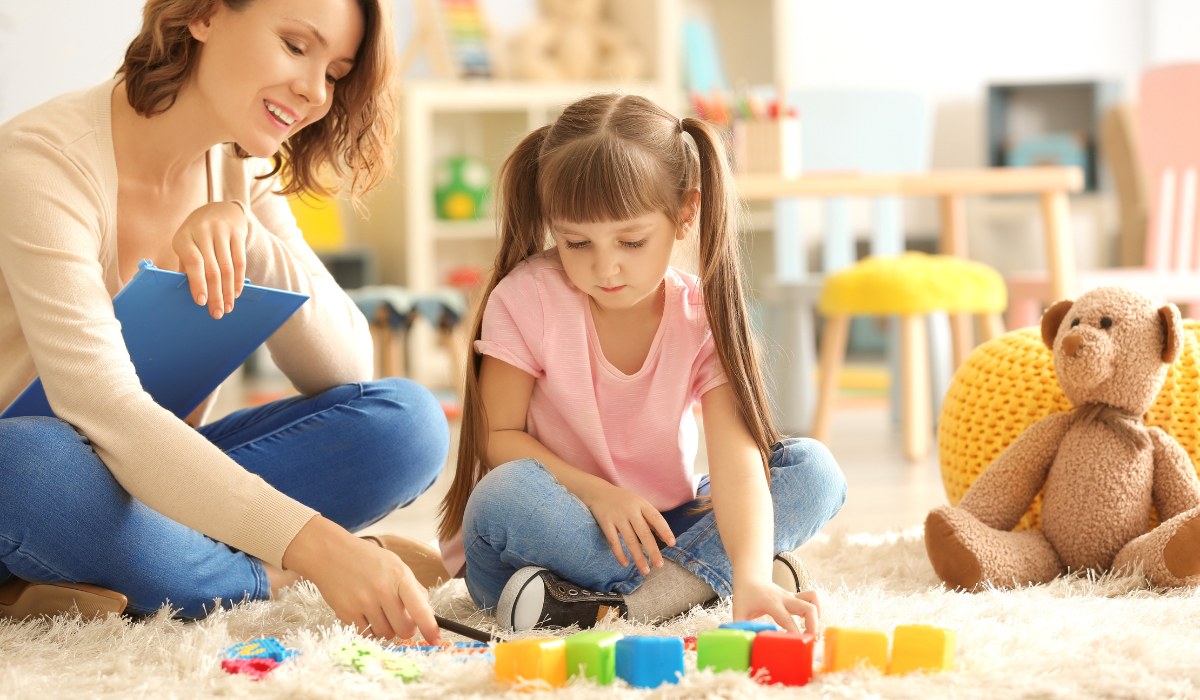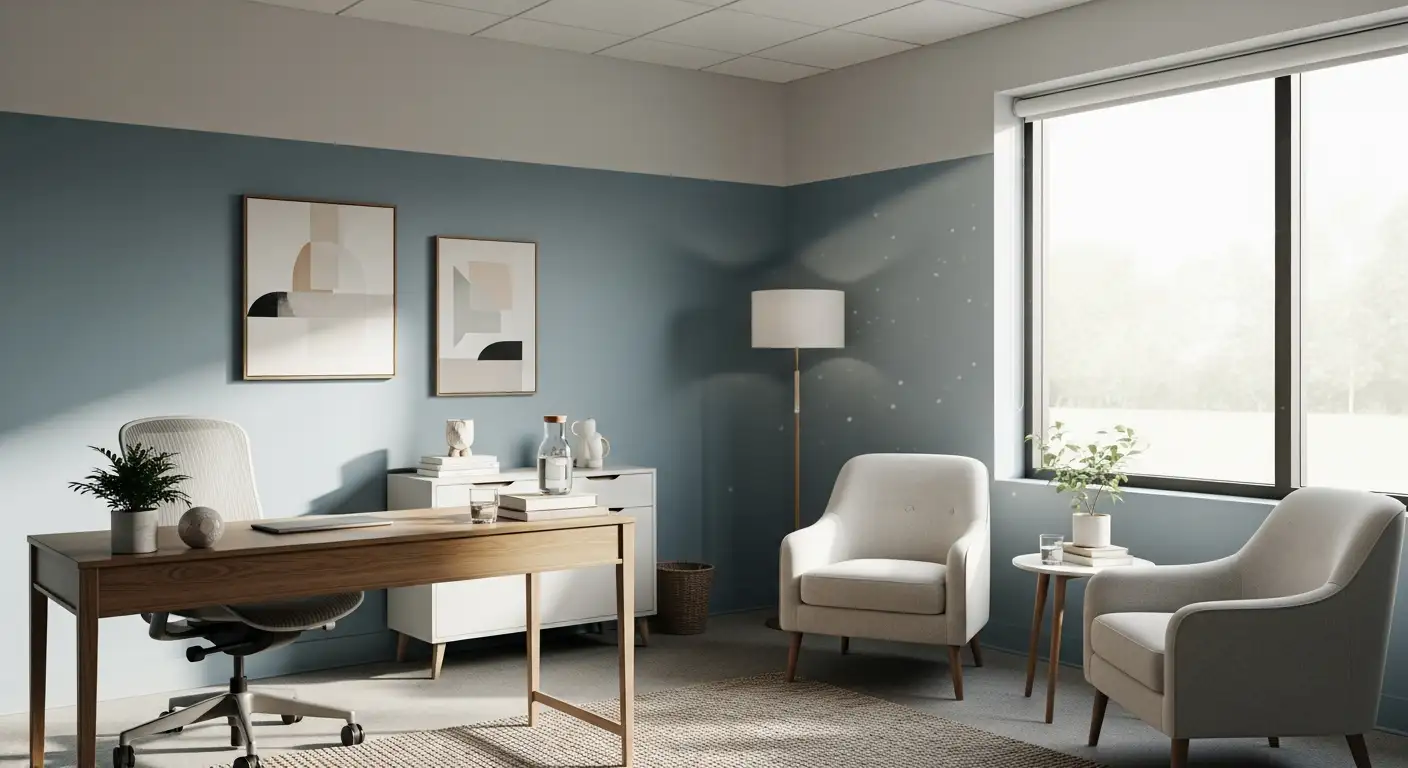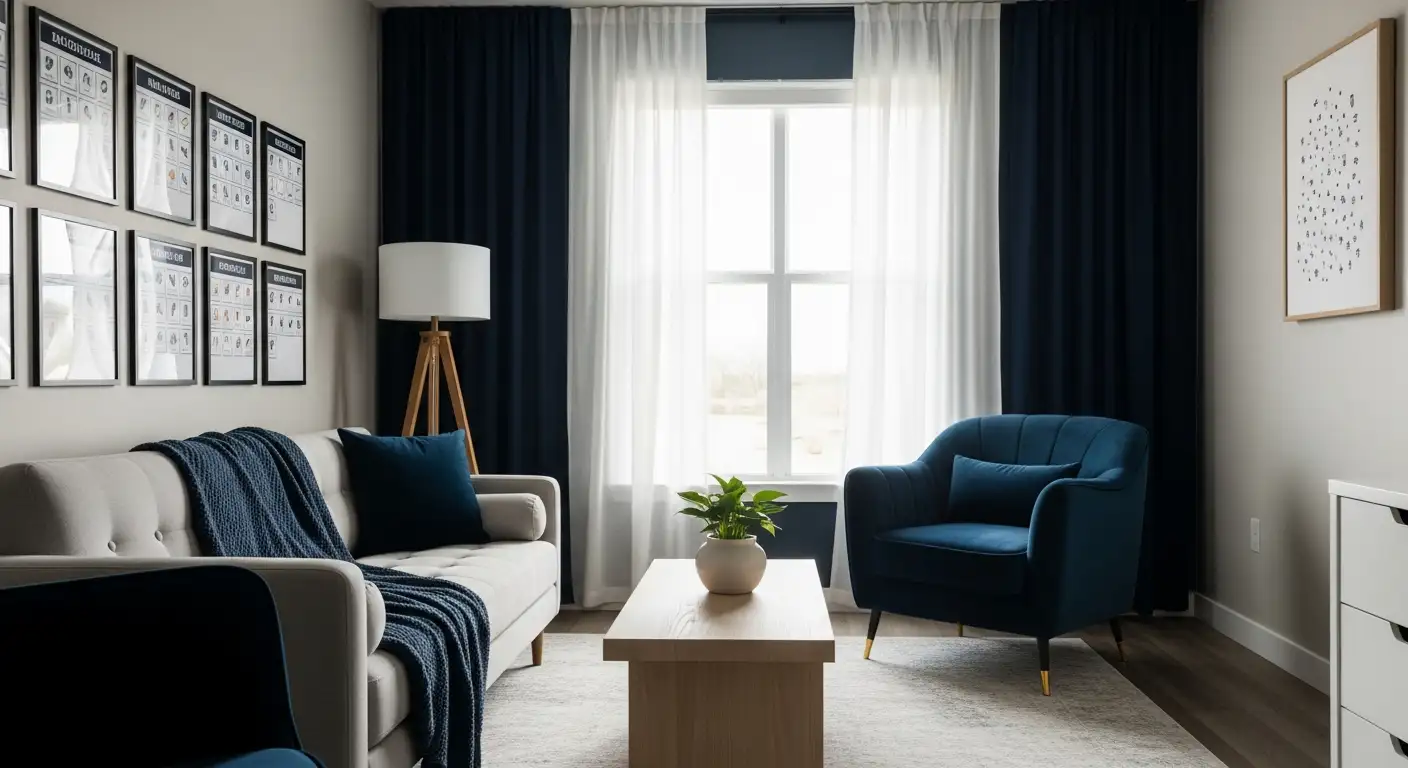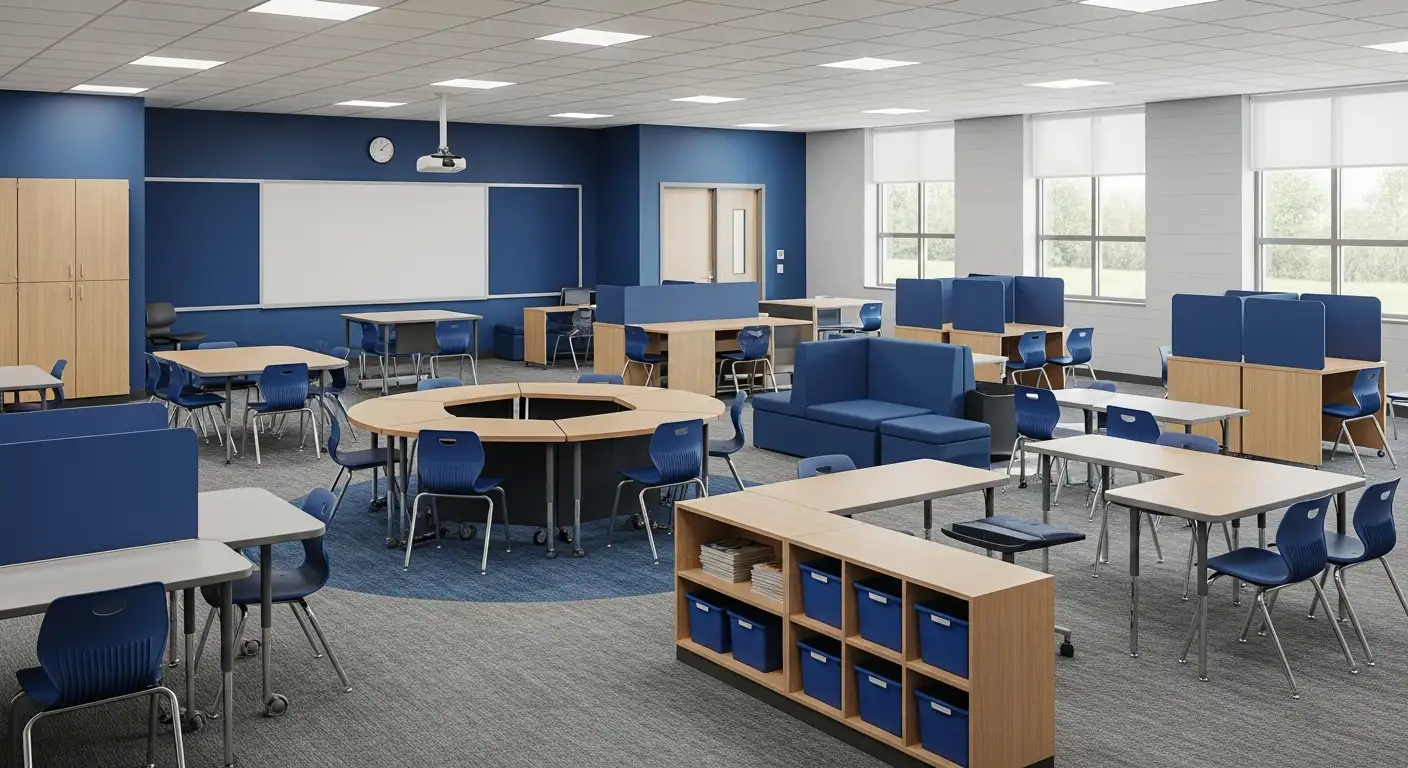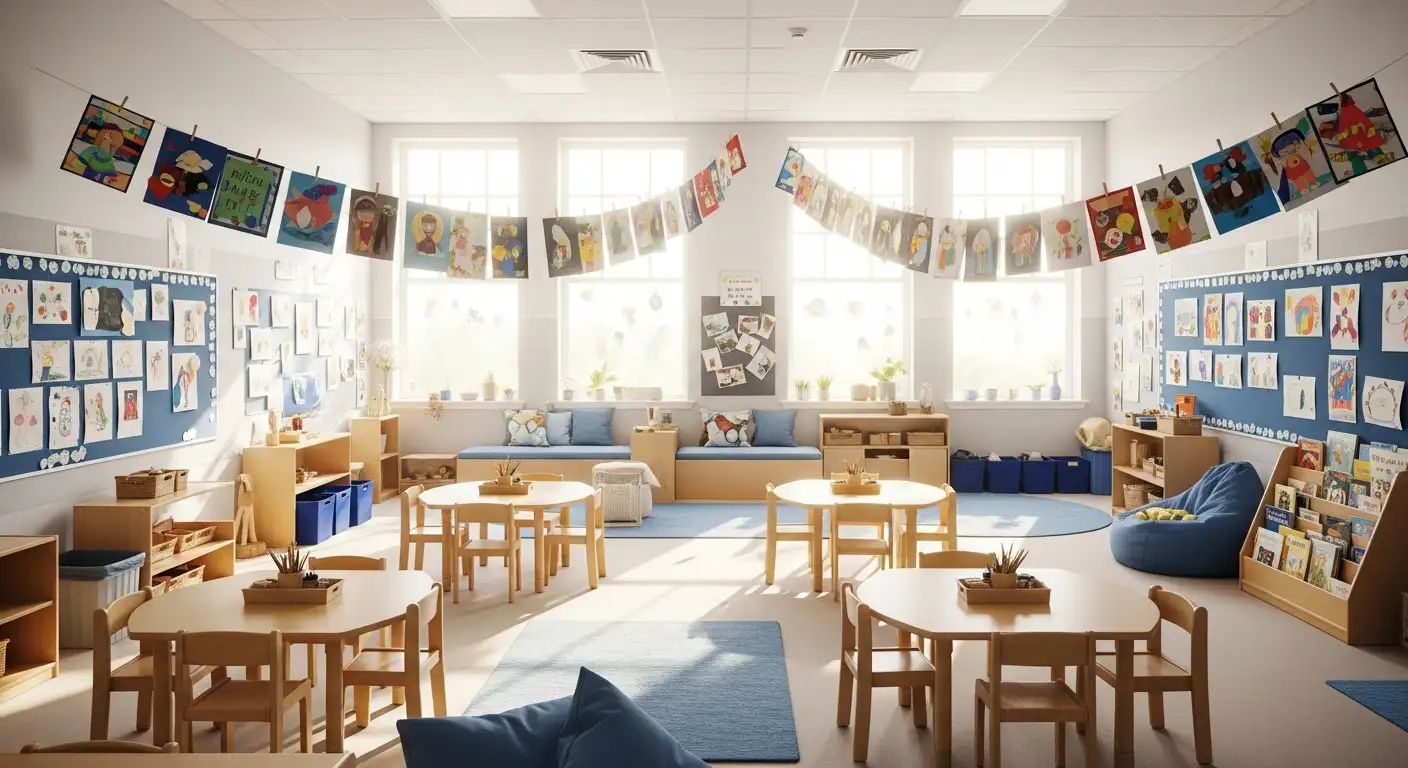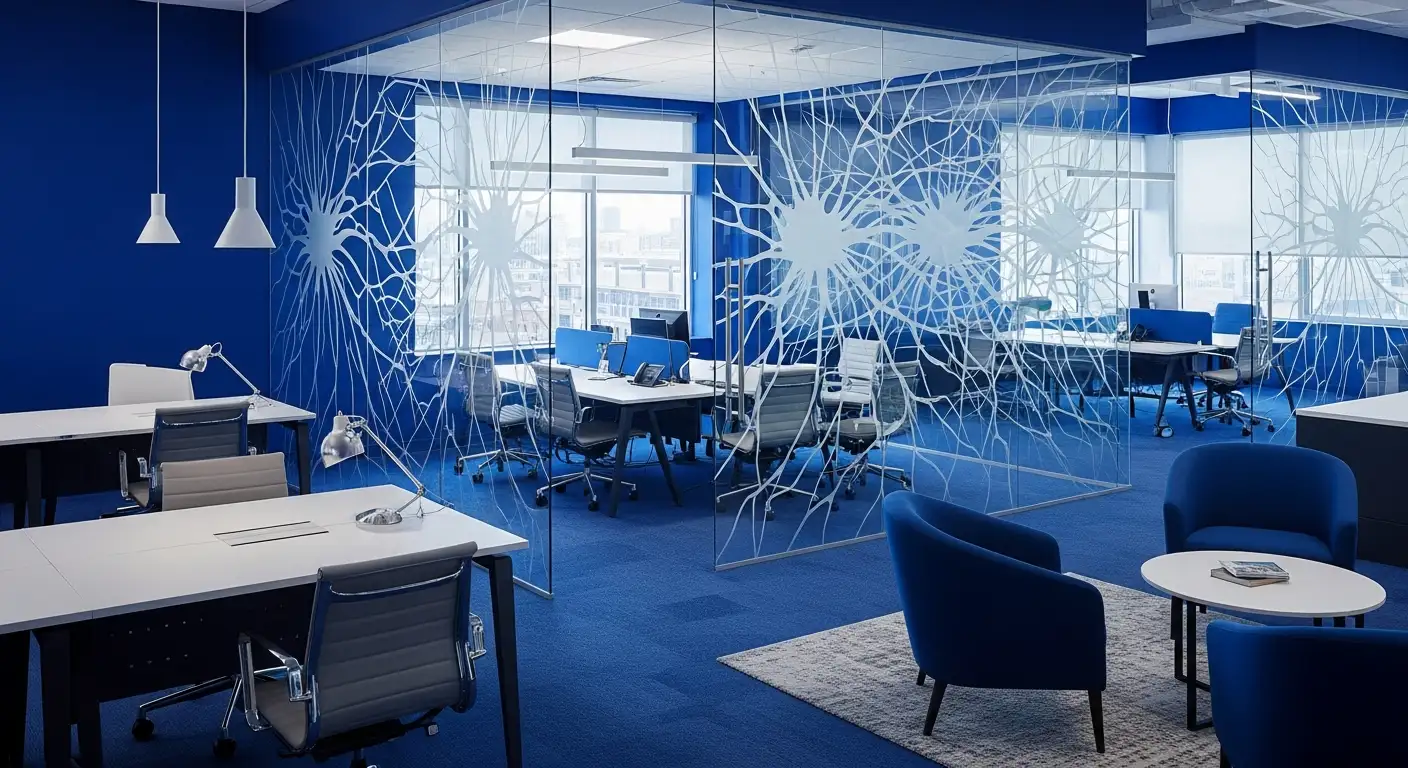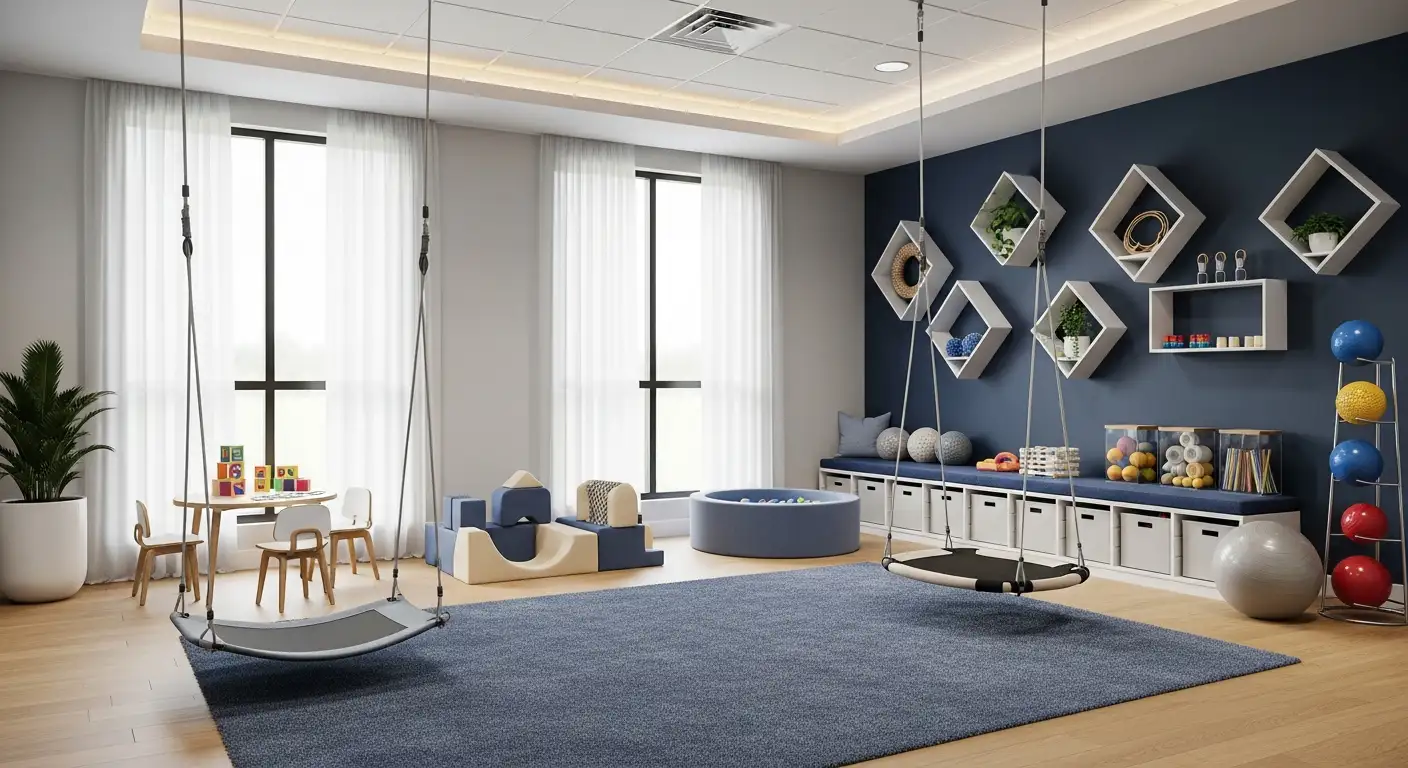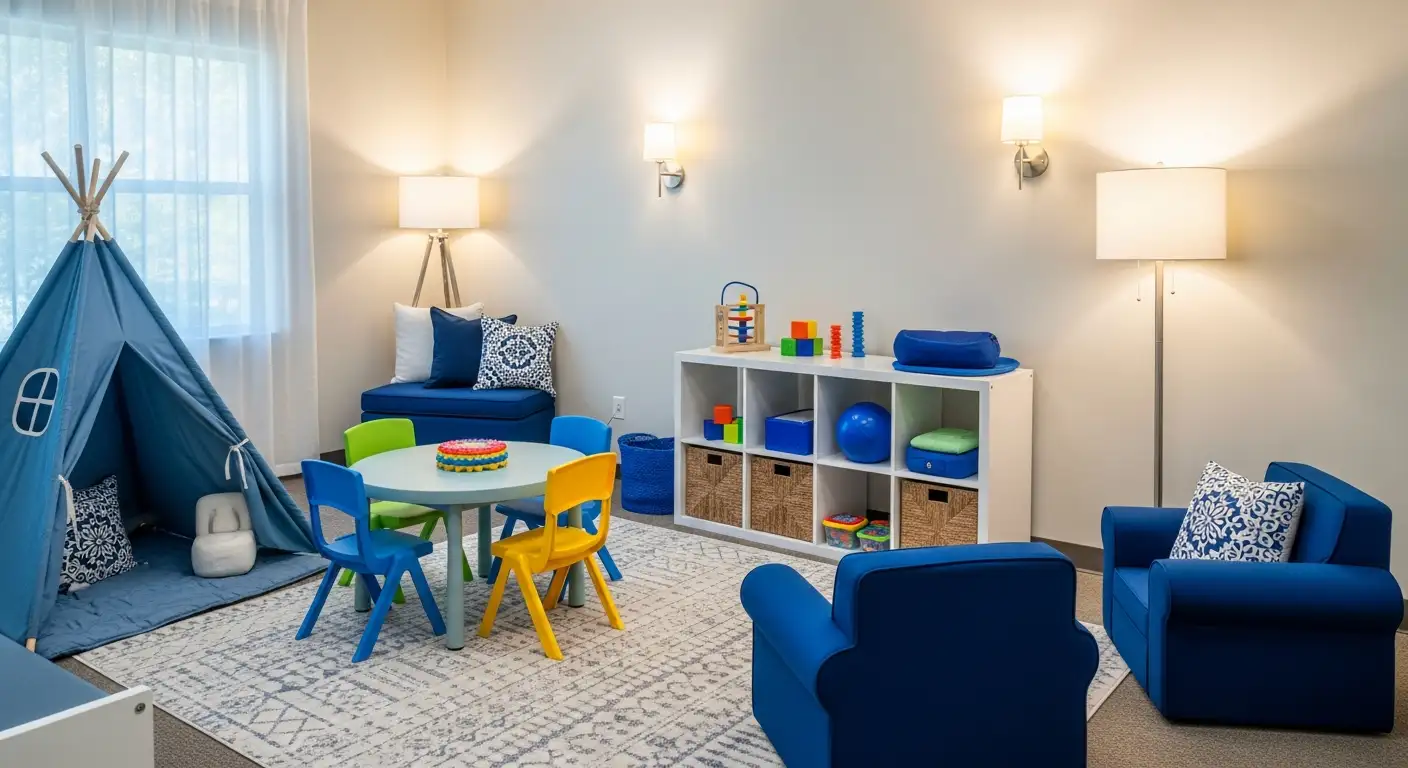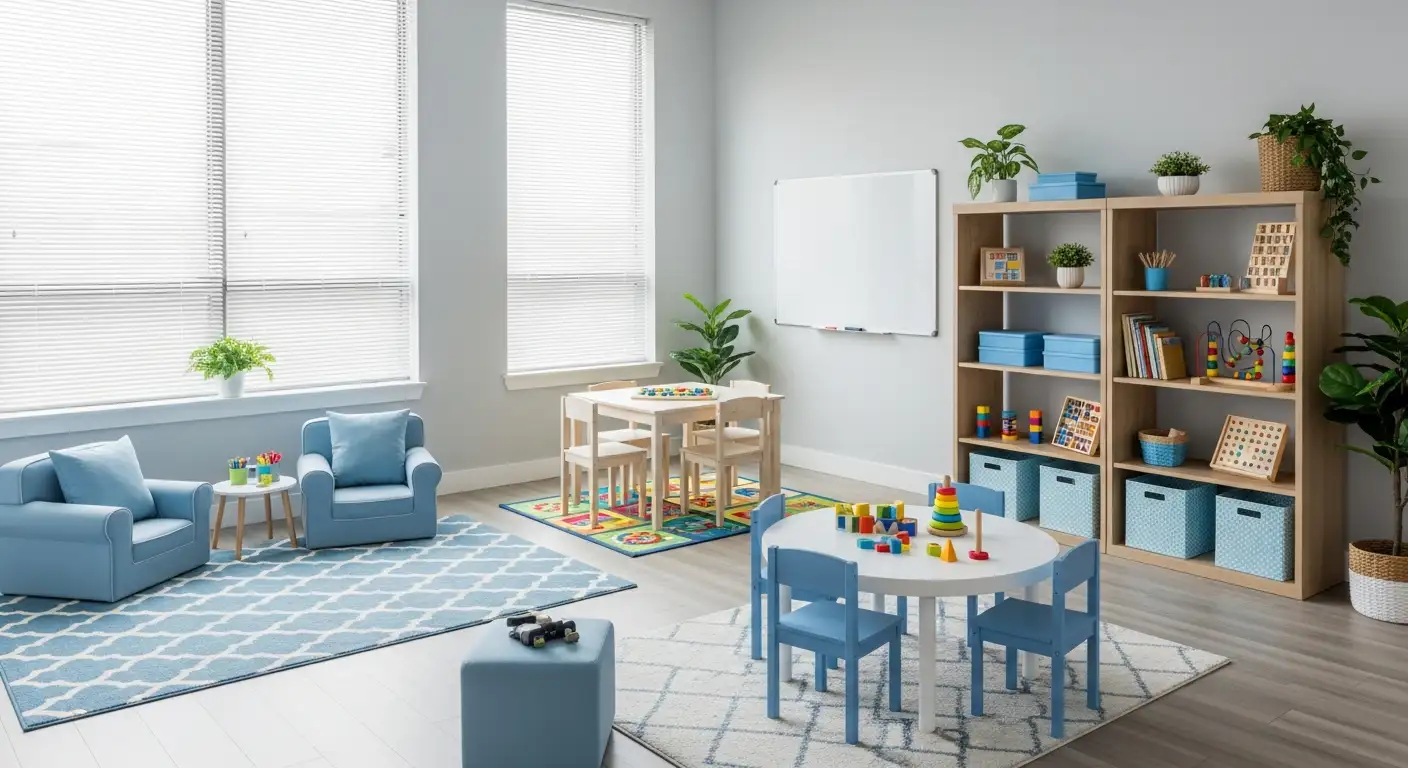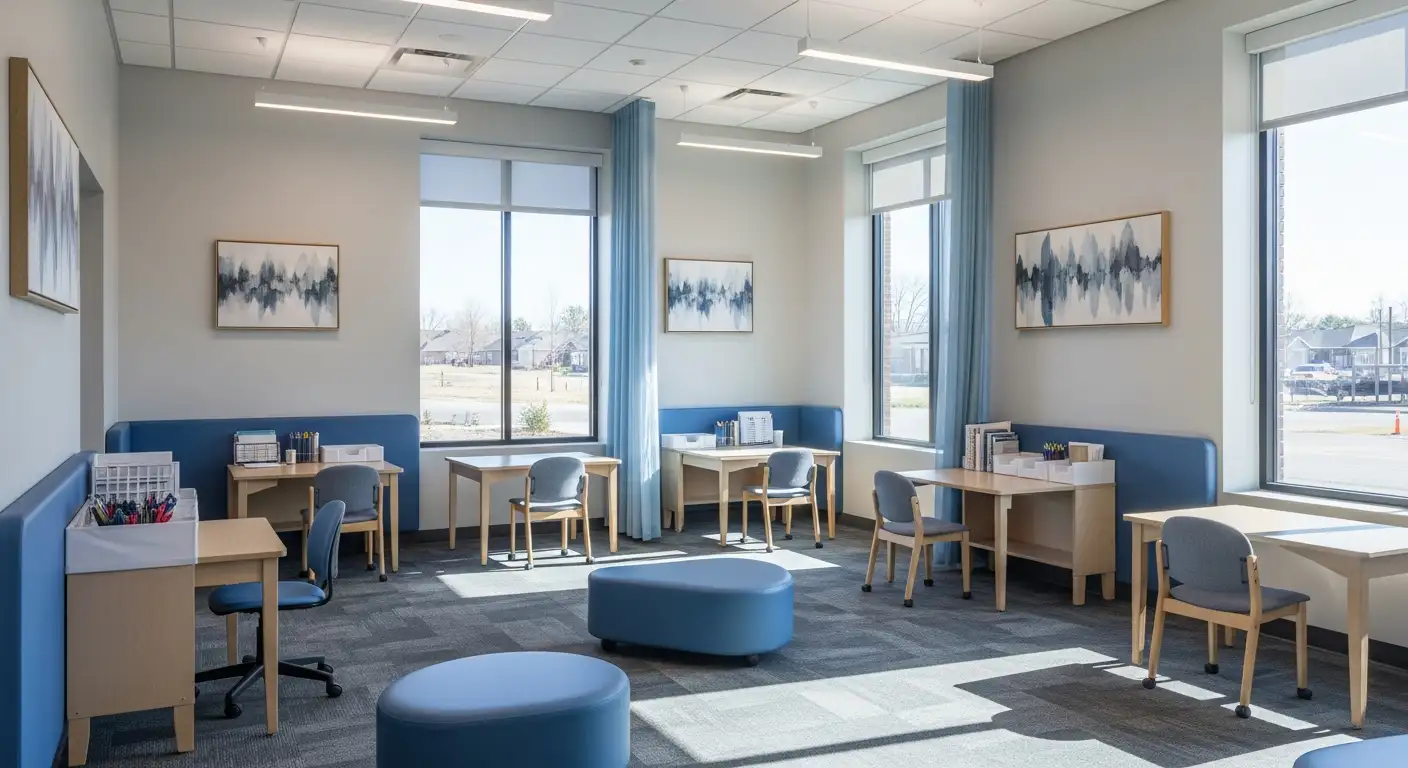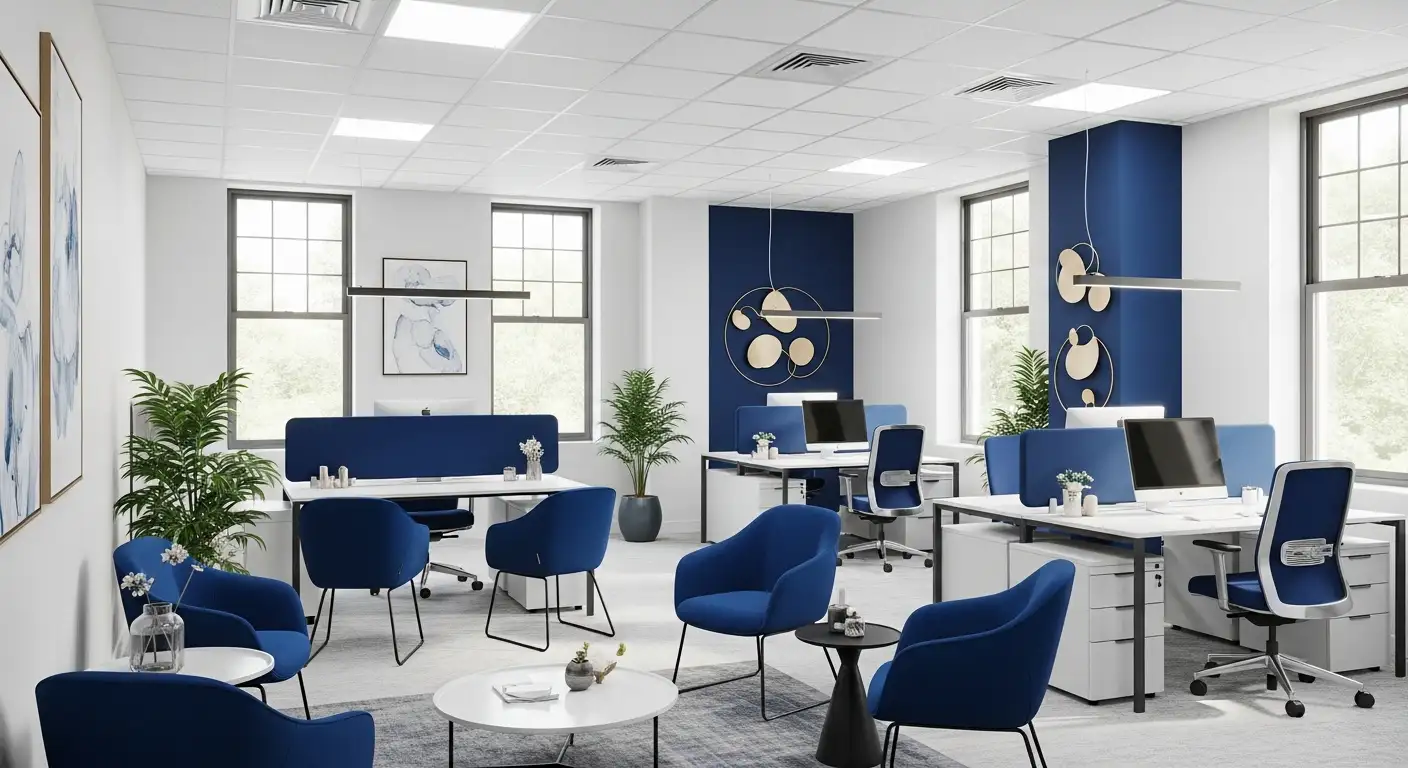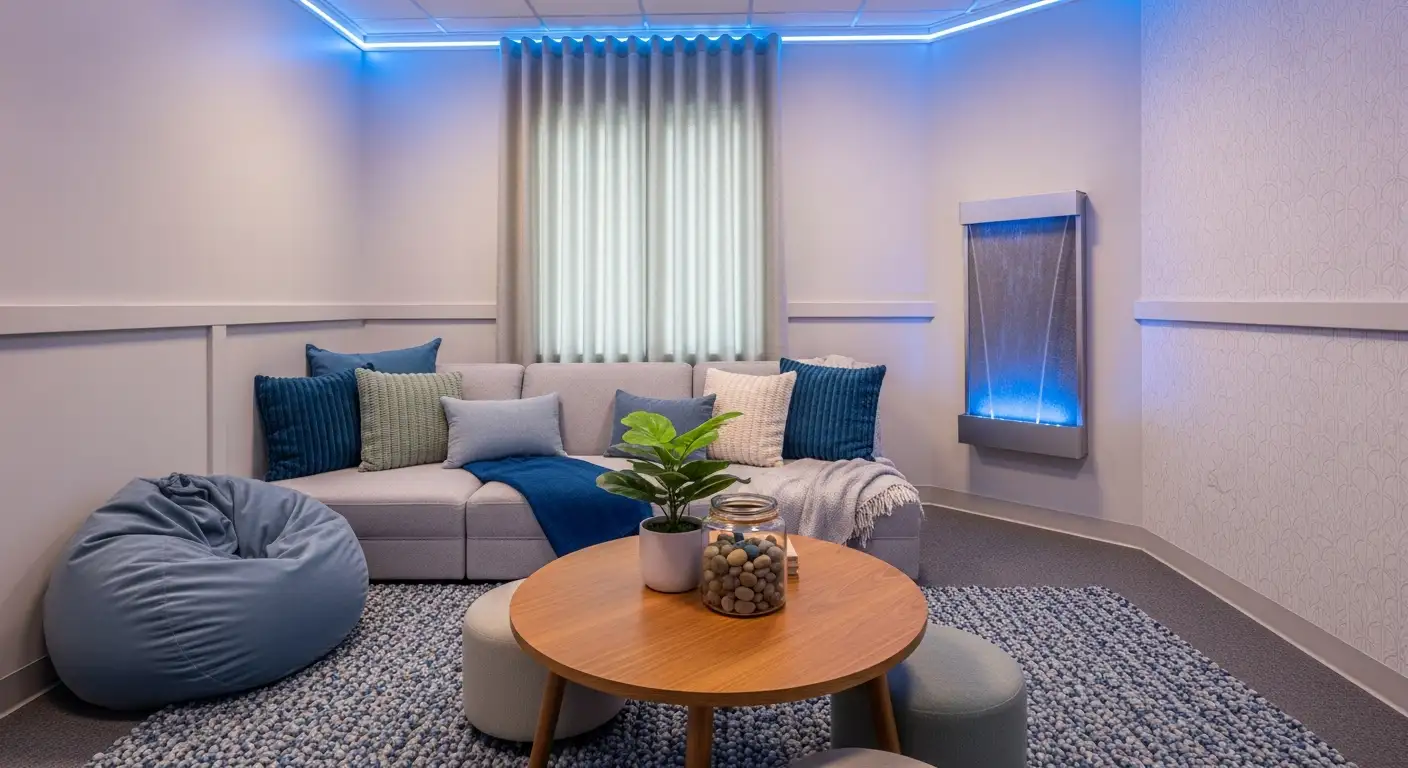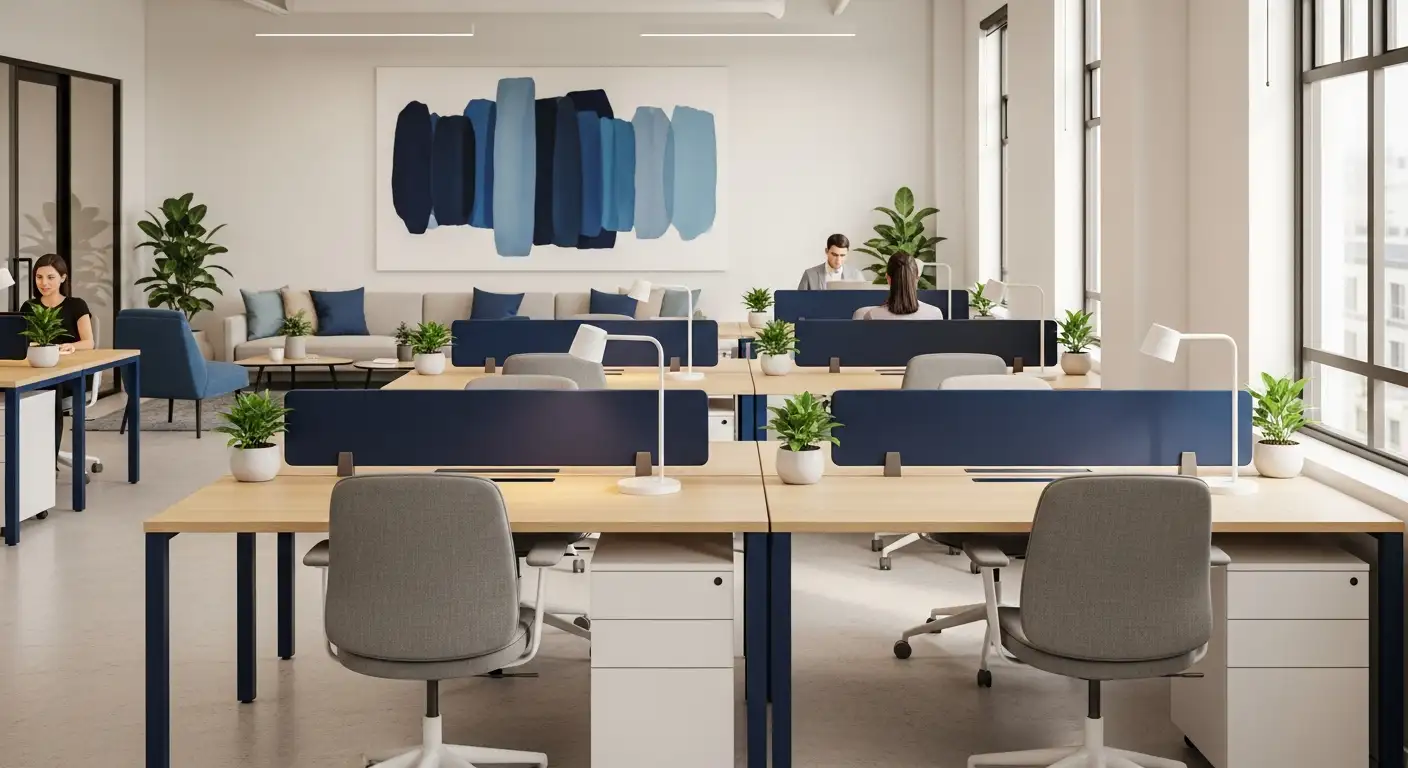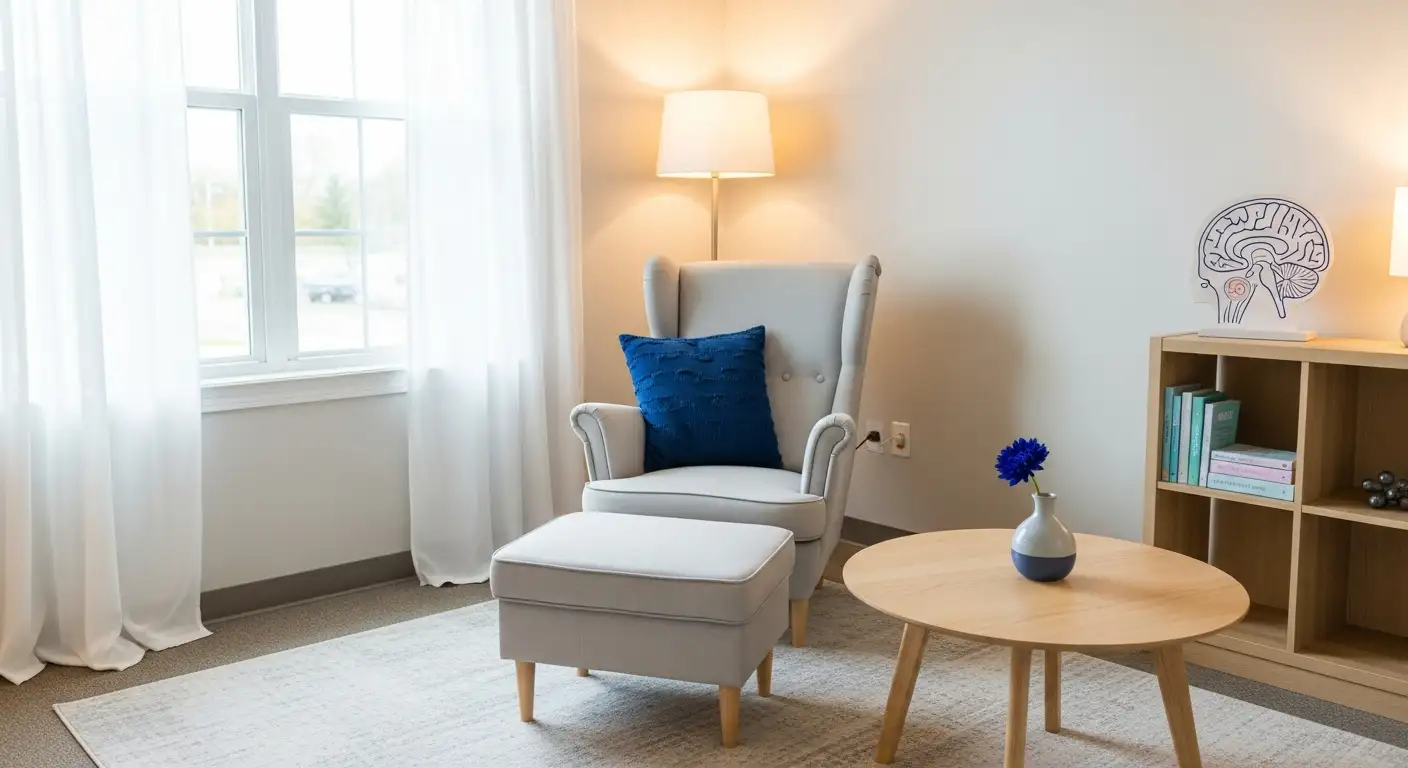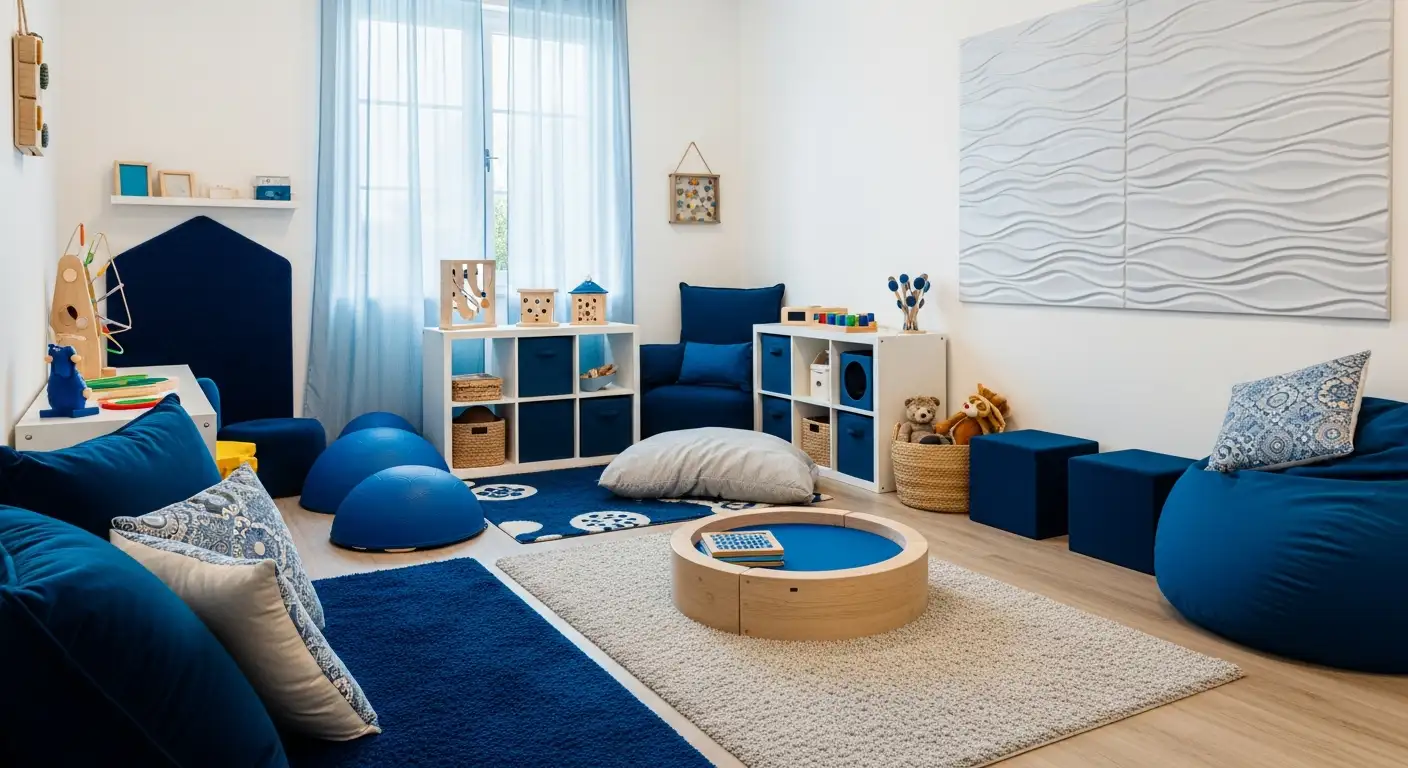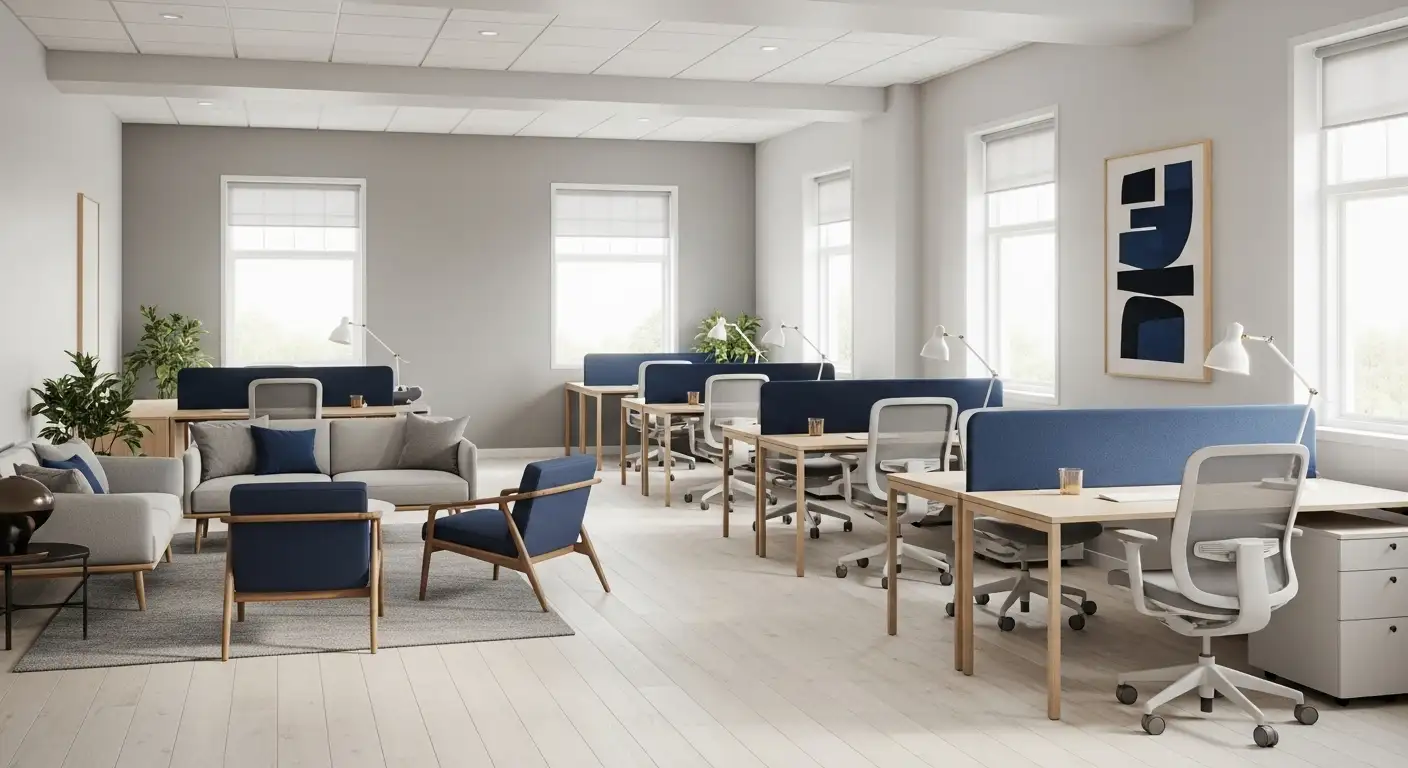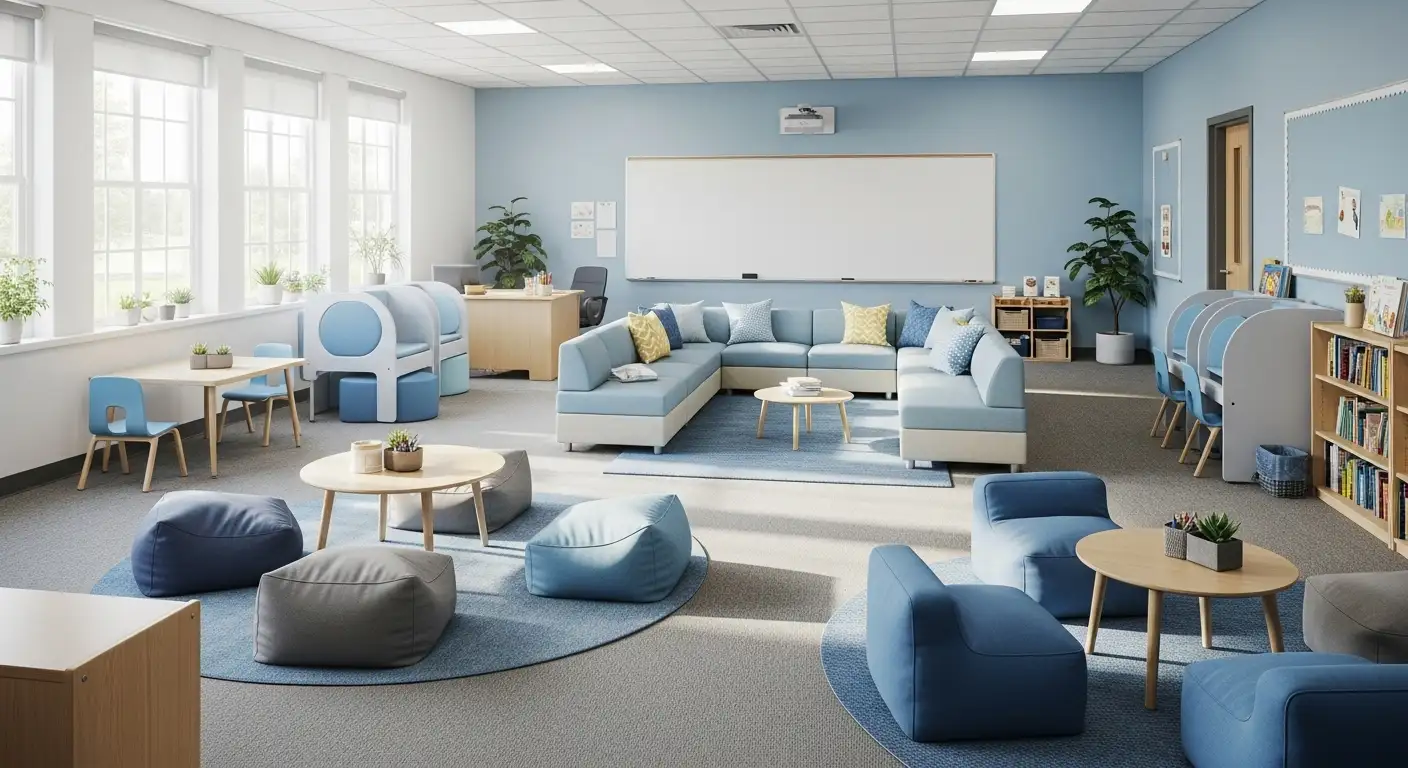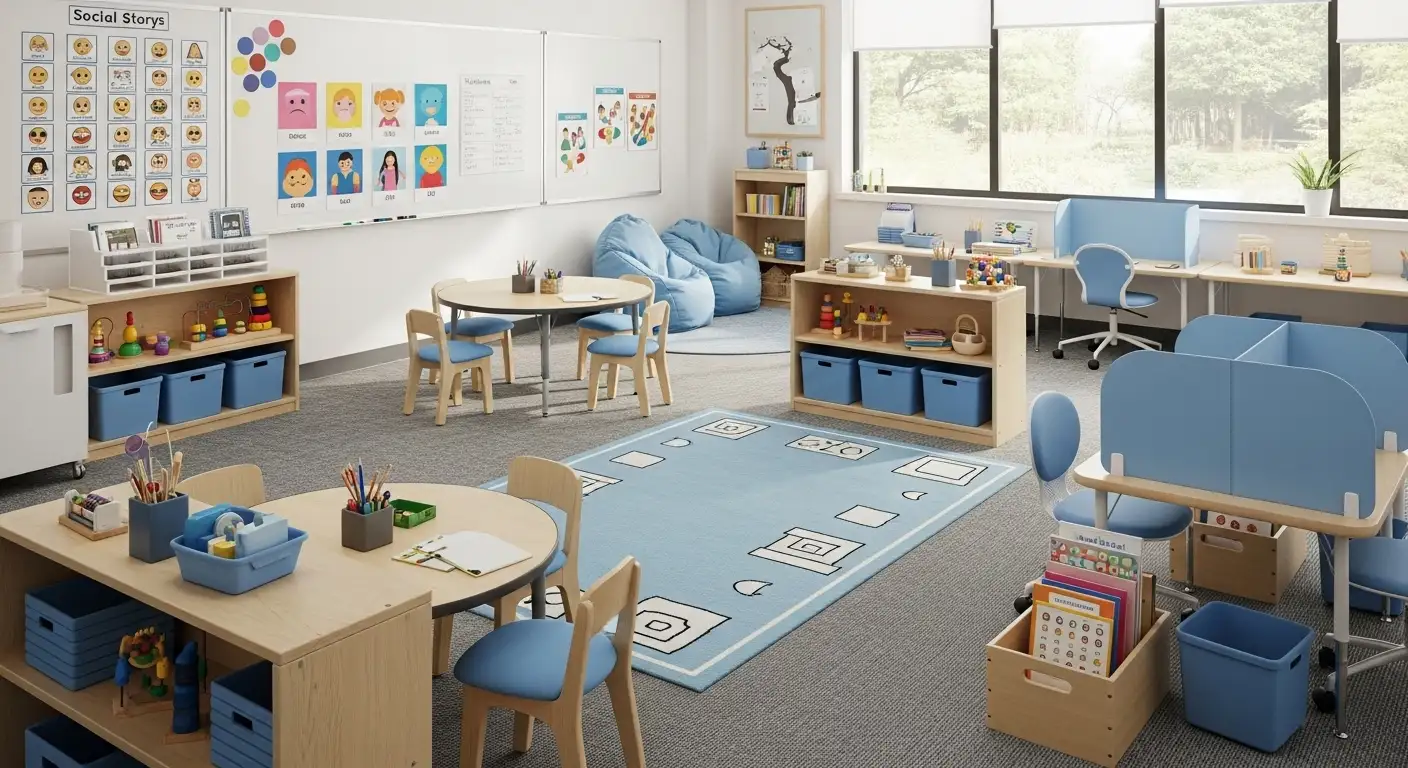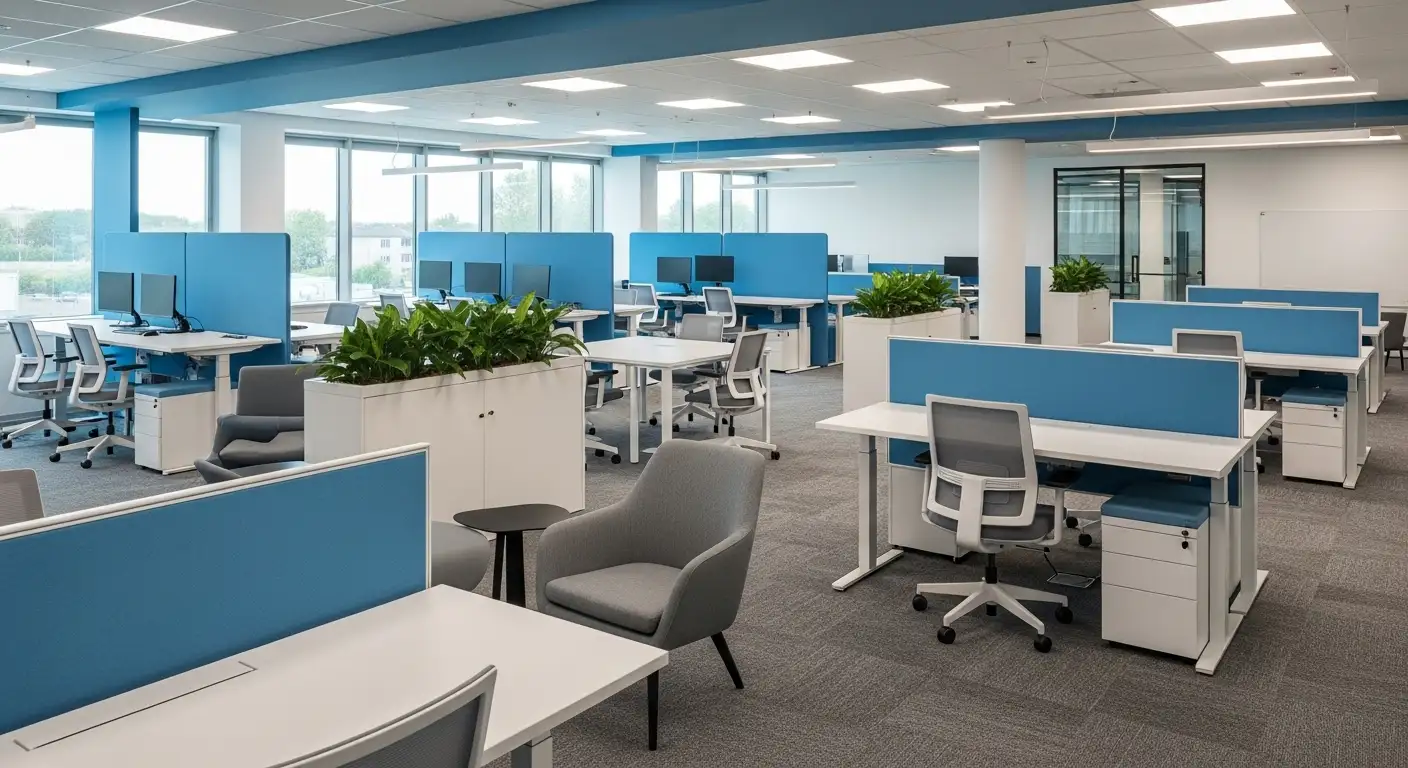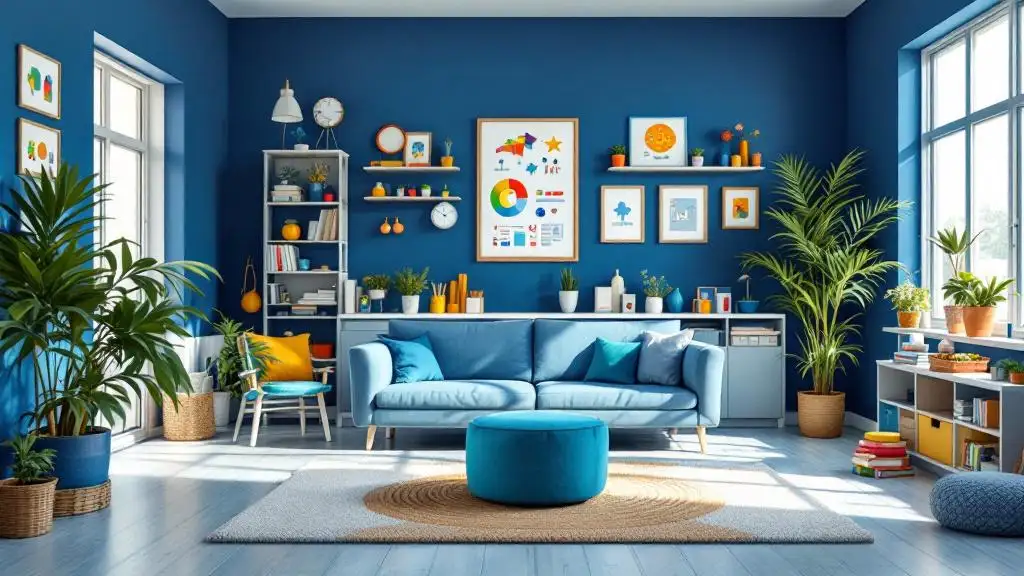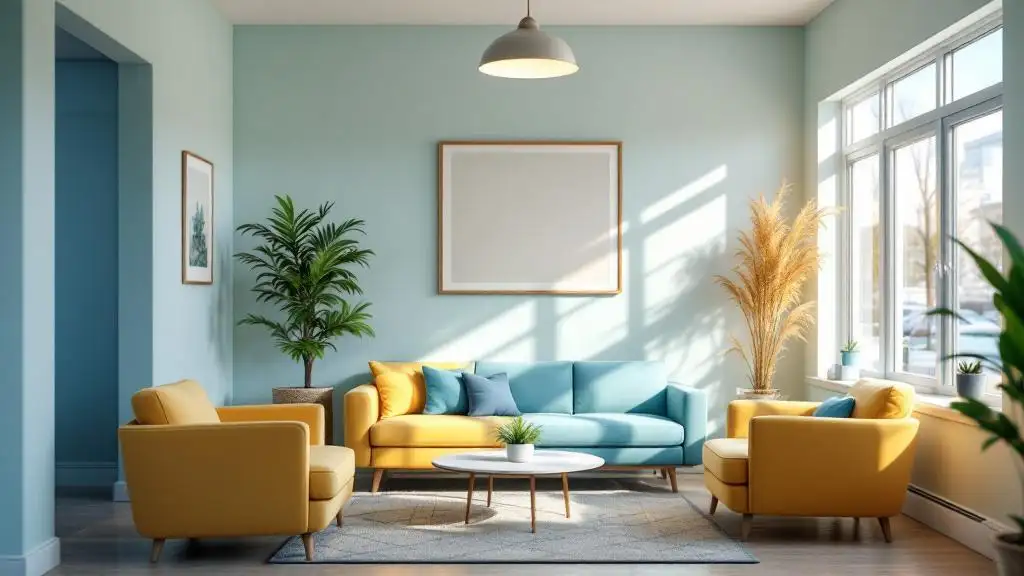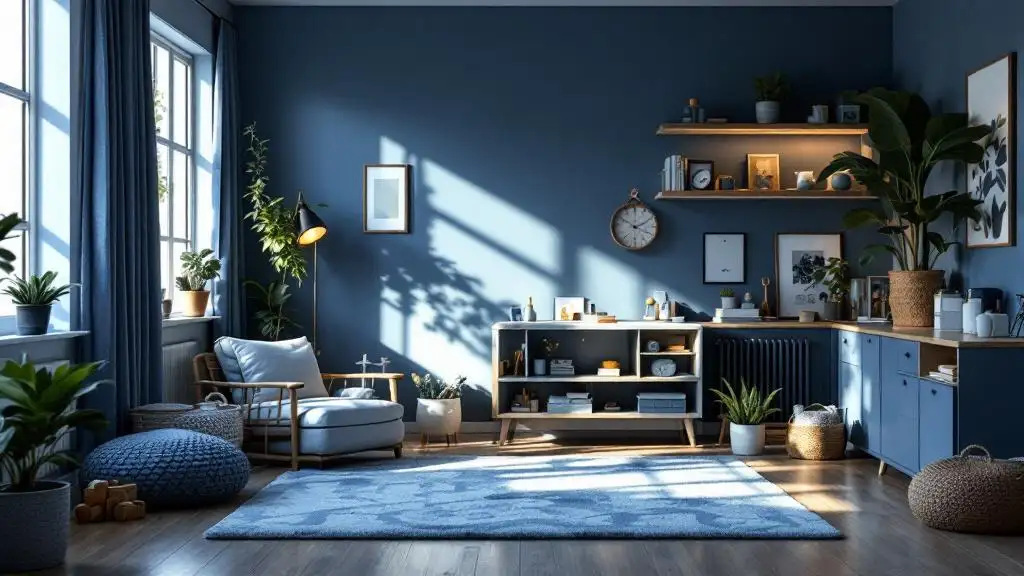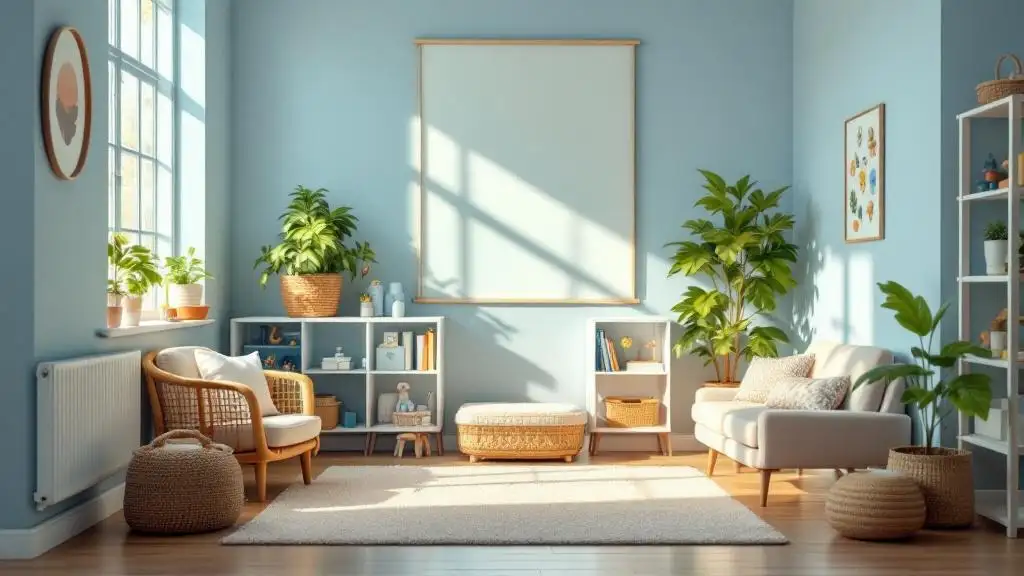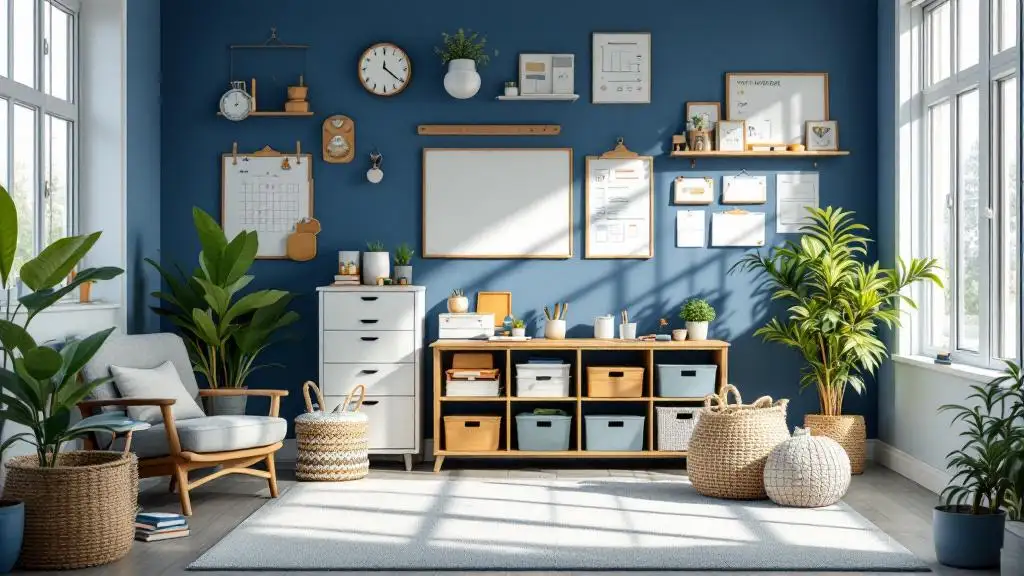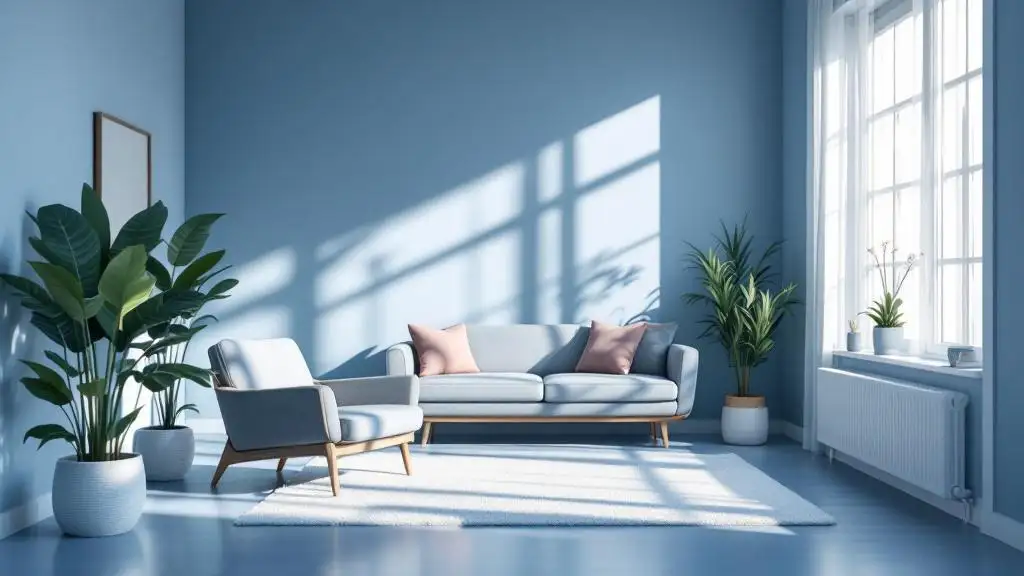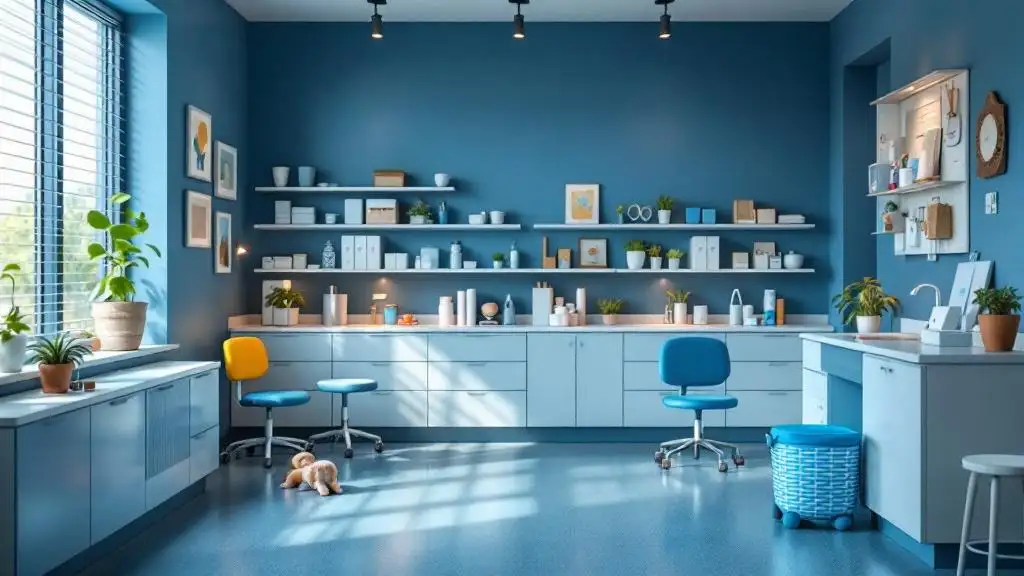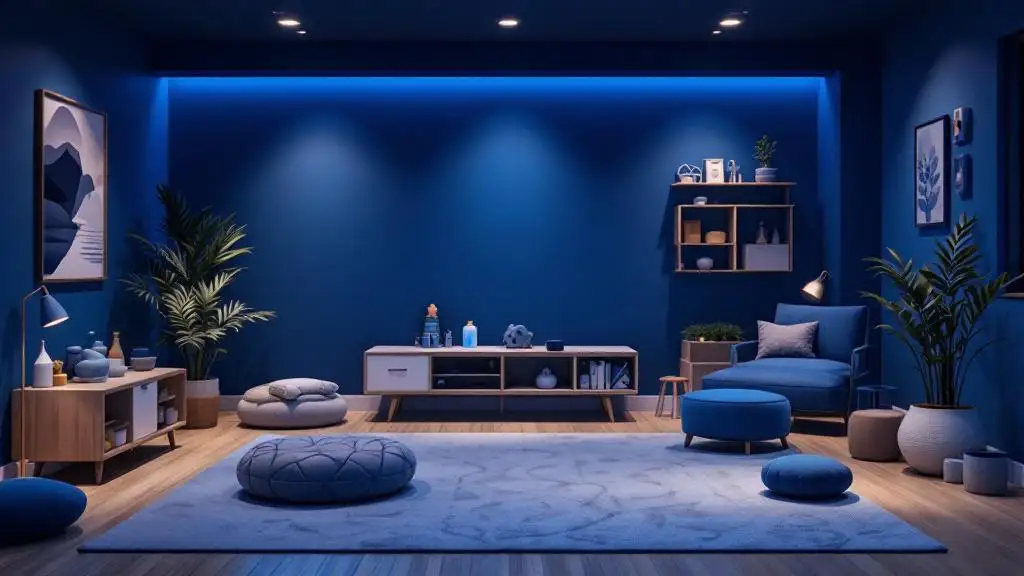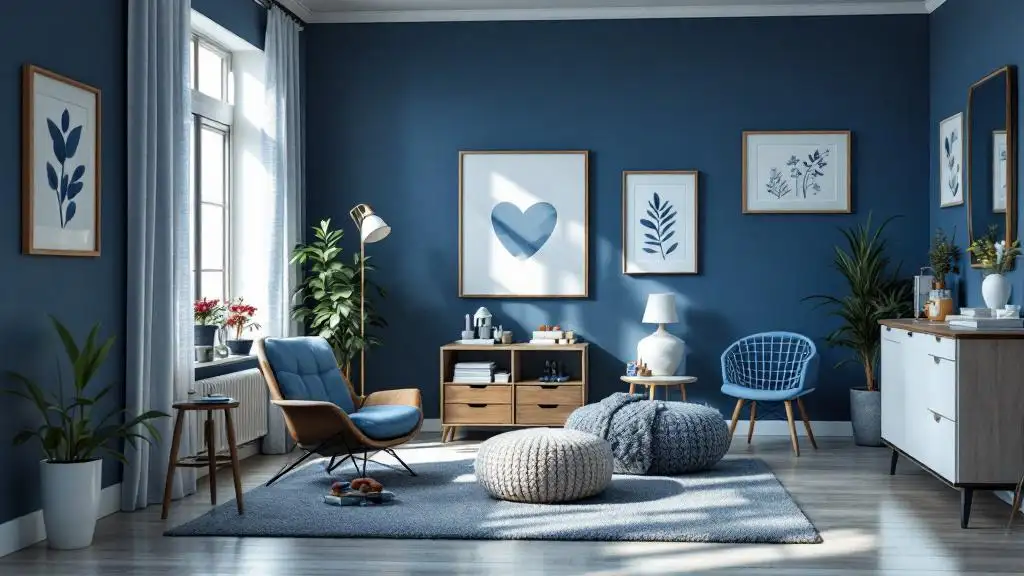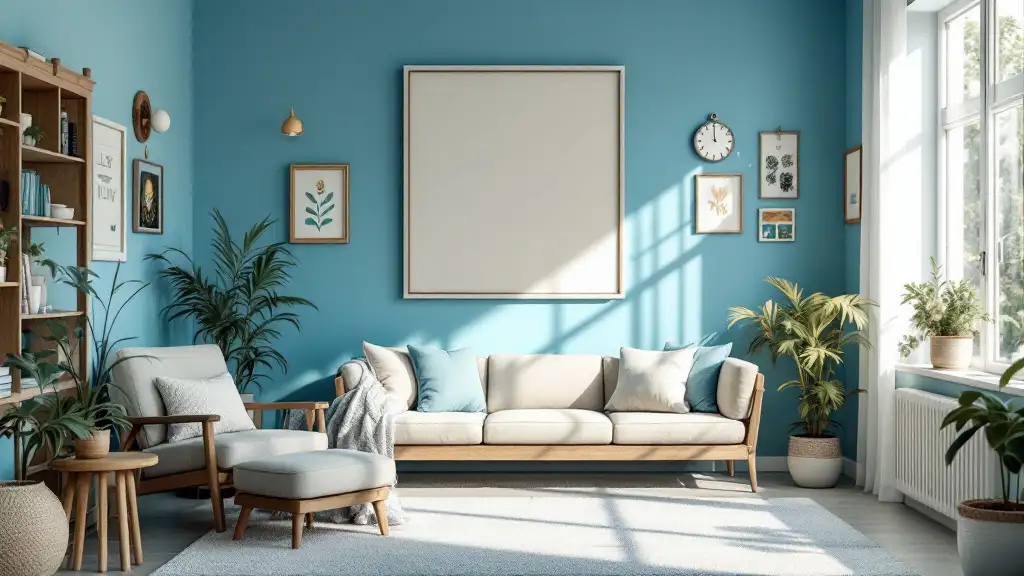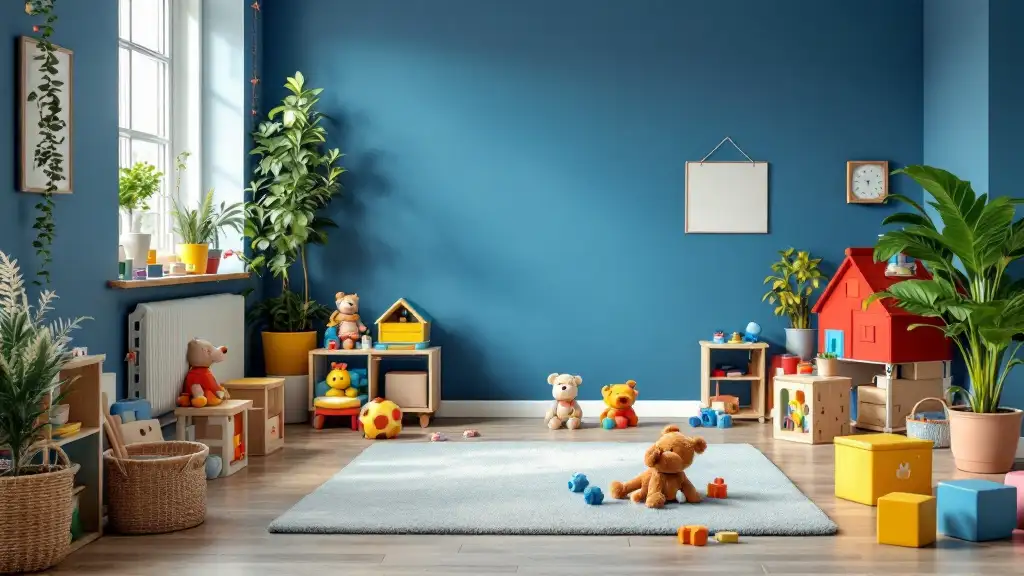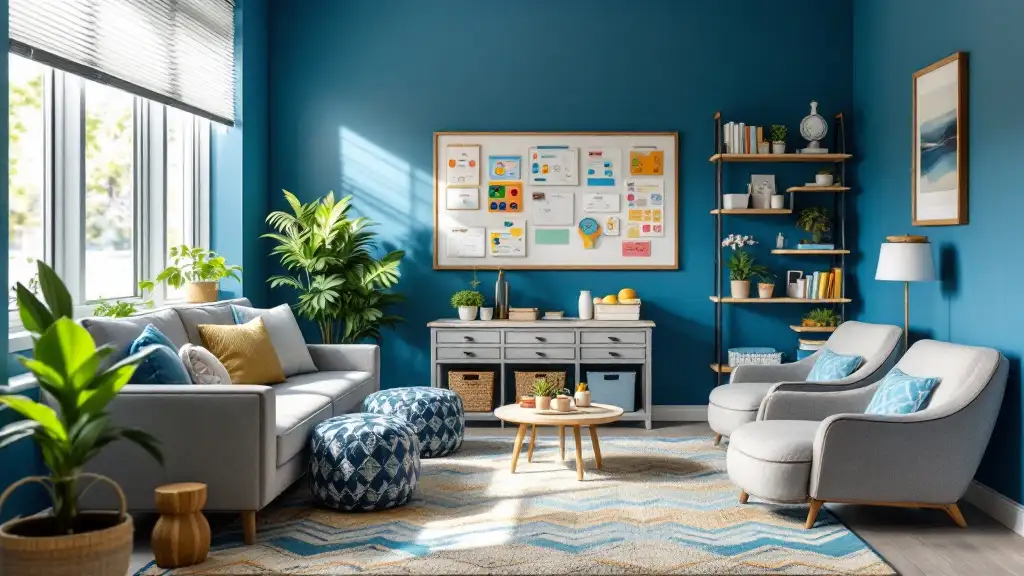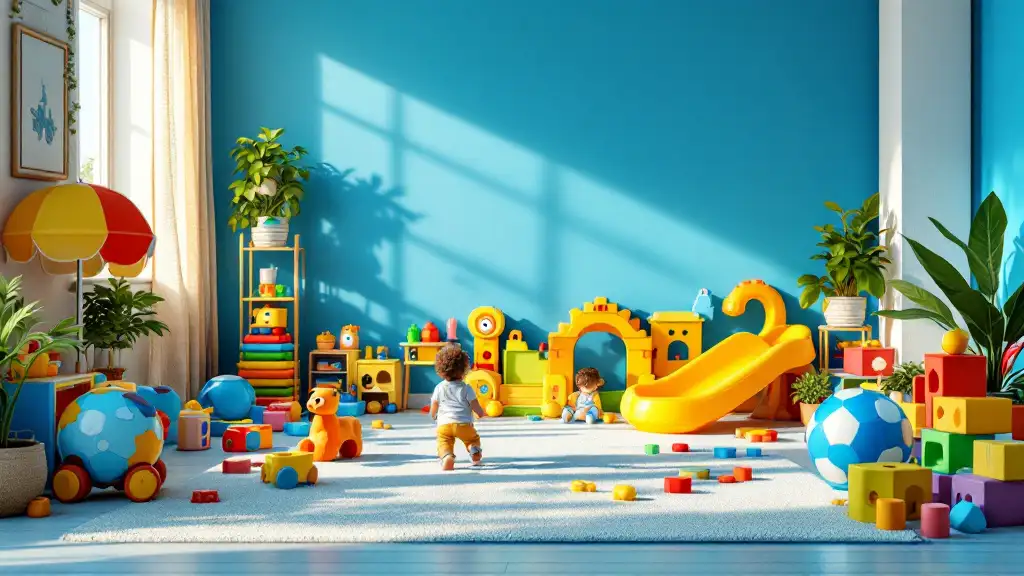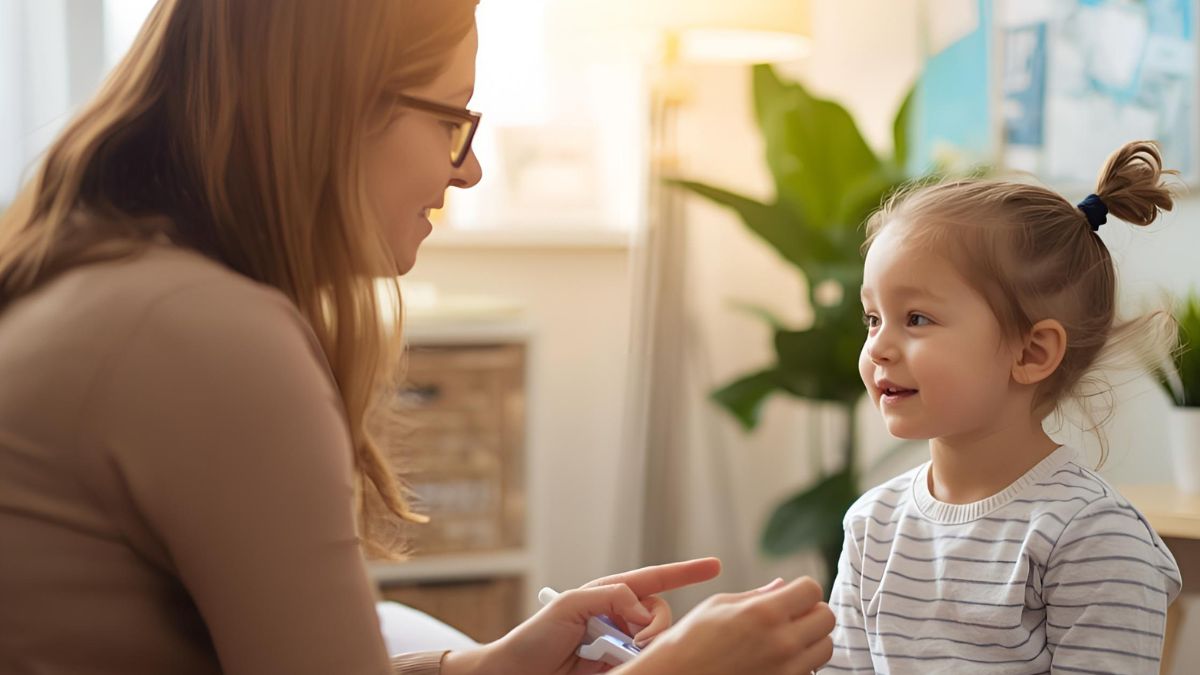How to Use Sensory Rooms in Public Facilities for Autism Support
Creating Inclusive Public Spaces: The Role of Sensory Rooms in Autism Support

Understanding Sensory Challenges for Autistic Individuals in Public Settings
Public facilities such as supermarkets, eateries, and healthcare environments can present significant sensory challenges for autistic individuals. Overwhelming sensory stimuli like bright lights, loud sounds, and unpredictable environments often create disabling spaces that limit participation and increase anxiety. Sensory rooms—multi-sensory environments designed to regulate sensory input—are increasingly recognized as essential tools in public spaces to support autistic individuals. This article explores how sensory rooms can be integrated into public facilities to create enabling environments, improve accessibility, and enhance quality of life for autistic people.
Sensory Burden and Its Impact on Autistic Adults in Public Facilities
Challenges in public environments for autistic adults
Autistic adults often find various public environments challenging due to overwhelming sensory input. Places like supermarkets, eateries, highstreets, public transport, healthcare settings, retail shops, and shopping centers are commonly experienced as disabling. These spaces frequently impose a high sensory burden that many autistic individuals find difficult to manage.
Sensory burden characteristics
Disabling sensory environments are defined by intense multisensory input such as loud sounds, bright or flickering lights, and strong or unusual scents. This sensory overload is often sustained and inescapable, and autistic adults generally lack control over these stimuli. Unpredictability and inconsistency in sensory input further heighten the challenge, creating environments that can induce anxiety and discomfort.
Examples of disabling environments
Typical disabling environments include:
- Supermarkets and retail shops: Bright fluorescent lighting combined with constant noise and strong food odors.
- Public transport: Crowded spaces with unpredictable noises, announcements, and movement.
- Healthcare settings: Bright lights, unfamiliar sounds, smells from disinfectants, and close physical contact.
These environments become barriers to participation for autistic individuals without appropriate adjustments or supports in place.
Enabling vs. Disabling Sensory Environments: Key Principles
What principles influence whether environments are disabling or enabling for autistic individuals?
Environments become either disabling or enabling based on several important principles that cater to the sensory needs of autistic individuals. These principles include Sensoryscape, Space, Predictability, Understanding, Adjustments, and Recovery.
Sensoryscape refers to the overall sensory characteristics of a place—how intense or overwhelming the sensory input like sounds, lights, and scents is. Disabling environments typically have a high sensory burden with sustained, inescapable input that can overwhelm autistic individuals.
Space involves the physical organization and design of an environment. Proper spatial arrangement can reduce sensory overload by creating zones or areas that allow for different levels of sensory stimulation and providing places to escape if needed.
Predictability relates to how consistent and foreseeable sensory experiences are in a setting. Unpredictable and inconsistent environments increase sensory challenges, while providing advance information about what to expect enhances accessibility and comfort.
Understanding is critical and refers to staff awareness and knowledge of autism. When staff are well-informed, they can better support autistic individuals and reduce barriers caused by misunderstanding.
Adjustments involve tailored modifications like sensory-friendly schemes, communication pacing, or the use of quiet zones. These changes make the environment more accessible and manageable.
Finally, Recovery reflects the availability of safe spaces where autistic individuals can retreat to reduce sensory overload and regain calm.
Together, these principles create environments that minimize sensory burden and enhance control, transforming potentially disabling places into welcoming, enabling spaces for autistic people.
The Role of Sensory Rooms in Public Facilities
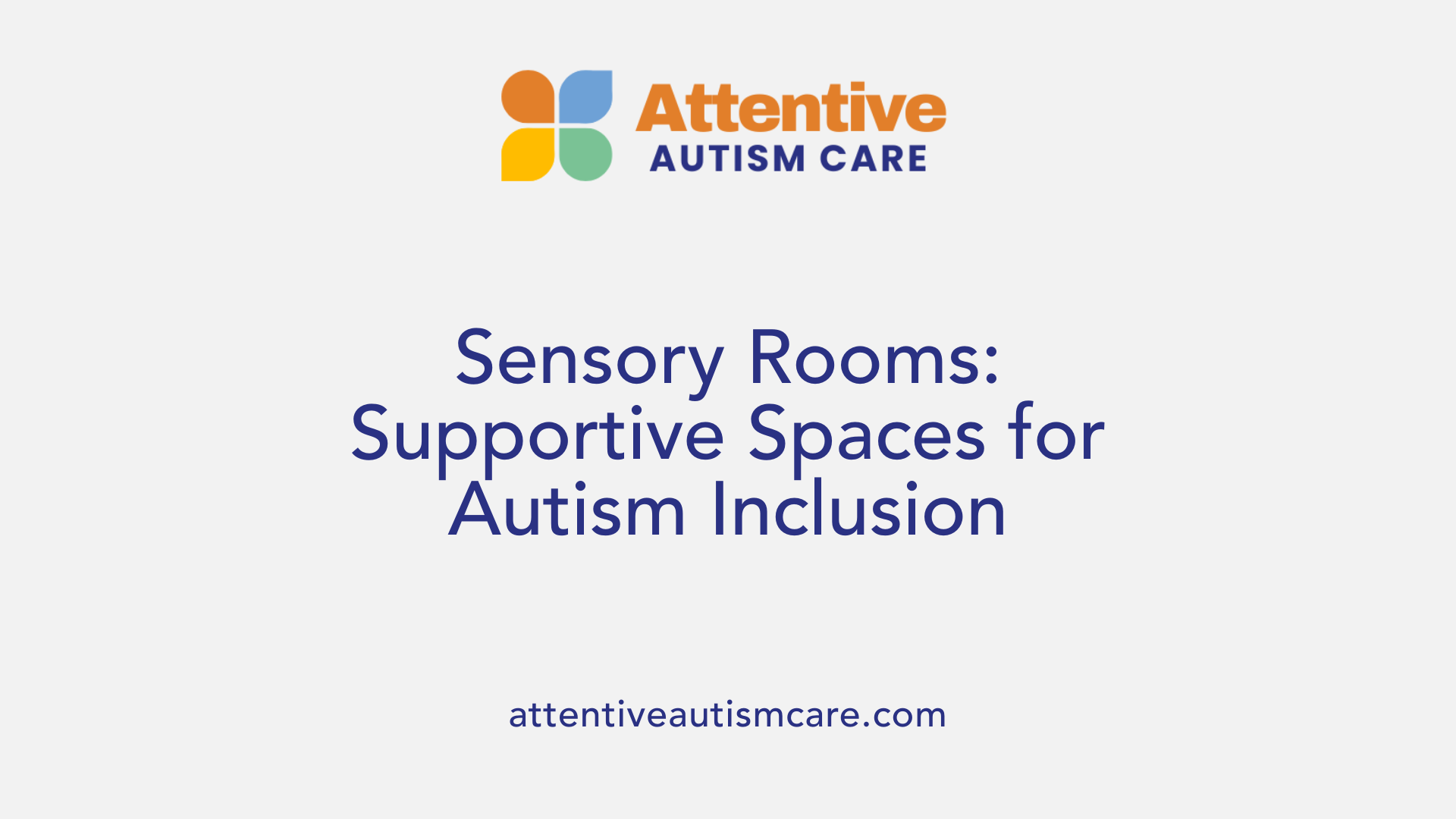
What Are Sensory Rooms and How Are They Used in Autism Support?
Sensory rooms are specially designed multi-sensory environments that include equipment and stimuli targeting various senses such as touch, hearing, sight, smell, vestibular functions, and proprioception. These rooms first emerged in the Netherlands during the 1970s under the name Snoezelen® rooms and were originally intended to provide enjoyment for individuals with learning disabilities.
The equipment in sensory rooms can be either passive—like bubble tubes, fiber optic lights, or calming music—or require active engagement, such as touching panels or exploring textured surfaces. These stimuli help regulate sensory input, reducing sensory overload commonly experienced by autistic individuals and promoting relaxation and engagement.
Purpose of Sensory Rooms in Autism Support
Sensory rooms serve as controlled environments that help individuals with autism manage sensory challenges by providing tailored sensory experiences. They mitigate the intense, overwhelming sensory input often encountered in daily life, particularly in disabling environments with high sensory burden and unpredictable stimuli.
Research, including studies at institutions like Cardiff University’s Wales Autism Research Centre, has demonstrated that sensory rooms can improve attention, mood, anxiety levels, and social relationships among autistic children. By offering spaces where individuals can self-regulate through calming or stimulating sensory input, these rooms support both individual well-being and better participation in various settings.
Applications of Sensory Rooms in Public Settings
In public facilities such as healthcare centers, schools, and community spaces, sensory rooms are increasingly incorporated to create more enabling environments for autistic individuals. They function as recovery areas where people can escape from sensory overload caused by bright lights, loud noises, or crowded spaces.
These rooms are often divided into zones catering to different sensory needs—calming, active, and transition areas—allowing personalized use according to an individual’s current sensory state. In healthcare environments, sensory adaptive environments featuring quiet rooms, sensory kits, and specialized equipment support smoother procedures and reduce anxiety.
Ultimately, sensory rooms in public settings are vital for fostering accessibility and inclusion, ensuring that autistic individuals have supportive spaces designed to accommodate their sensory needs and improve their overall experiences.
Historical Origins and Evolution of Sensory Rooms
Development timeline
Sensory rooms first emerged in the 1970s in the Netherlands with the development of Snoezelen® rooms. Initially designed to provide enjoyment and comfort for individuals with learning disabilities, these environments offered gentle multisensory stimuli to engage various senses. Over time, the concept has evolved and been refined to support a wider range of sensory and developmental needs, including for autistic individuals.
Founding concepts of Snoezelen®
The original Snoezelen® rooms were conceived as controlled environments where passive and active sensory stimulation could be provided in a safe and relaxed setting. They include equipment such as bubble tubes, fiber optics, calming lights, soft music, and tactile panels. This multisensory approach encourages relaxation, exploration, and sensory regulation, essential for individuals who might find typical environments overwhelming.
Evolution for autism use
As awareness of autism's unique sensory processing differences grew, sensory rooms were adapted specifically to better support autistic children and adults. Modern sensory rooms often incorporate zoning strategies that organize spaces by sensory input intensity, catering to individual sensitivities. Passive features like calming lights are paired with interactive equipment encouraging active engagement. Additionally, sensory rooms have been integrated into varied settings such as schools, healthcare facilities, and community centers.
This evolution reflects a broader understanding of sensory needs in autism, emphasizing tailored environments that promote engagement, mood regulation, and reduction of anxiety through carefully designed multisensory experiences.
Sensory Features Critical to Autism and Their Accommodation
How do hyper- and hypo-reactivity manifest in autistic individuals?
Autistic individuals often experience hyper-reactivity, where sensory stimuli are overwhelming and intense, or hypo-reactivity, where sensory input is underwhelming or ignored. This means they may be extremely sensitive to sounds, touch, lights, smells, or movement, or conversely, may seek additional sensory input to feel regulated.
What are common sensory triggers for autistic individuals?
Common triggers include bright or flickering lights, loud or sustained noises, strong scents, and complex tactile sensations. Environments like supermarkets, healthcare settings, and public transport can present sustained and inescapable sensory input, which often leads to sensory overload and distress.
Which sensory adaptations promote comfort and accessibility?
Effective adaptations include implementing sensory-friendly adjustments such as reducing noise and harsh lighting, providing spaces for recovery from sensory overload, and offering sensory equipment like weighted blankets and fiber optic lights. Sensory rooms equipped with multi-sensory stimuli engage touch, hearing, sight, and proprioception, allowing for regulated sensory experiences tailored to individual needs. Additionally, providing clear, predictable information and training staff to understand sensory sensitivities enhances comfort and participation.
Together, recognizing hyper- and hypo-reactivity, identifying common triggers, and applying targeted sensory adaptations support autistic individuals in navigating and feeling more comfortable in various environments.
Sensory Overload in Healthcare Settings and Challenges Faced by Autistic Individuals
Why do autistic individuals experience sensory overload in healthcare settings?
Autistic individuals often encounter a high sensory burden in healthcare environments, which can include bright, glaring lights, loud or unpredictable sounds, strong antiseptic smells, and physical touch during medical procedures. These sensory stimuli are frequently intense and inescapable, with little control over the environment, resulting in sensory overload.
Sensory stimuli in healthcare environments
Healthcare settings can be overwhelming multisensory environments. Bright fluorescent lighting, constant background noise from machines or staff, unfamiliar odors, and sudden tactile sensations from examinations or treatments all contribute to heightened sensory input. These combined factors create sustained and unpredictable stimuli that many autistic individuals find challenging to process.
Behavioral and emotional impacts
Exposure to these overwhelming sensory conditions can trigger anxiety, distress, and discomfort. In some cases, it may lead to unsafe behaviors such as withdrawal, refusal of care, or even aggression. Sensory overload complicates the autistic person’s ability to remain calm and participate effectively in healthcare processes.
Barriers to effective participation
Lack of understanding from healthcare staff about autistic sensory sensitivities and insufficient adjustments exacerbate these challenges. Without appropriate accommodations—such as quiet rooms, sensory-friendly equipment, or advance information about procedures—autistic individuals risk having distressing experiences that hinder timely and effective care.
Addressing these sensory challenges by incorporating sensory adaptive environments, staff training, and clear communication can create more enabling healthcare settings. These strategies foster safer participation, reduce anxiety, and improve outcomes for autistic patients.
Designing Sensory Adaptive Environments in Public Facilities
Features of Sensory Adaptive Spaces
Sensory adaptive environments are specially designed to accommodate the sensory needs of autistic individuals by minimizing sensory overload and promoting comfort and engagement. These spaces often include quiet rooms or multisensory rooms equipped with a range of sensory stimuli such as soft lighting, calming sounds, tactile surfaces, and neutral scents. The environment aims to reduce the intensity and unpredictability of sensory input commonly encountered in public facilities like supermarkets and healthcare settings.
Sensory Zoning and Organization
Effective sensory environments utilize the principle of sensory zoning, where spaces are organized based on the levels of sensory input they offer rather than traditional functional uses. Zones typically include calming areas for recovery, active areas for engagement, and transition zones to help individuals adjust between different sensory experiences. This spatial sequencing supports individuals by providing escape routes and controlled sensory exposure, critical for maintaining comfort and preventing sensory overload.
Adjustable Sensory Stimuli
To meet the varied needs of autistic individuals, sensory stimuli within these environments are adjustable. Equipment such as lights, music, and tactile panels can be modified in intensity, frequency, and type to suit personal preferences or sensory sensitivities. For instance, sensory rooms may feature bubble tubes and fiber optic lights that range from passive to interactive components, allowing users to actively engage or simply relax. This flexibility supports autonomy and encourages positive engagement within public settings.
These design strategies collaboratively foster more enabling sensory environments, contrasting with the disabling sensory burden often encountered in crowded or uncontrolled spaces. Implementing sensory adaptive environments in public facilities improves accessibility, reduces anxiety, and enhances participation for autistic adults and children alike.
Sensory Zoning and Its Importance in Interior Design for Autism
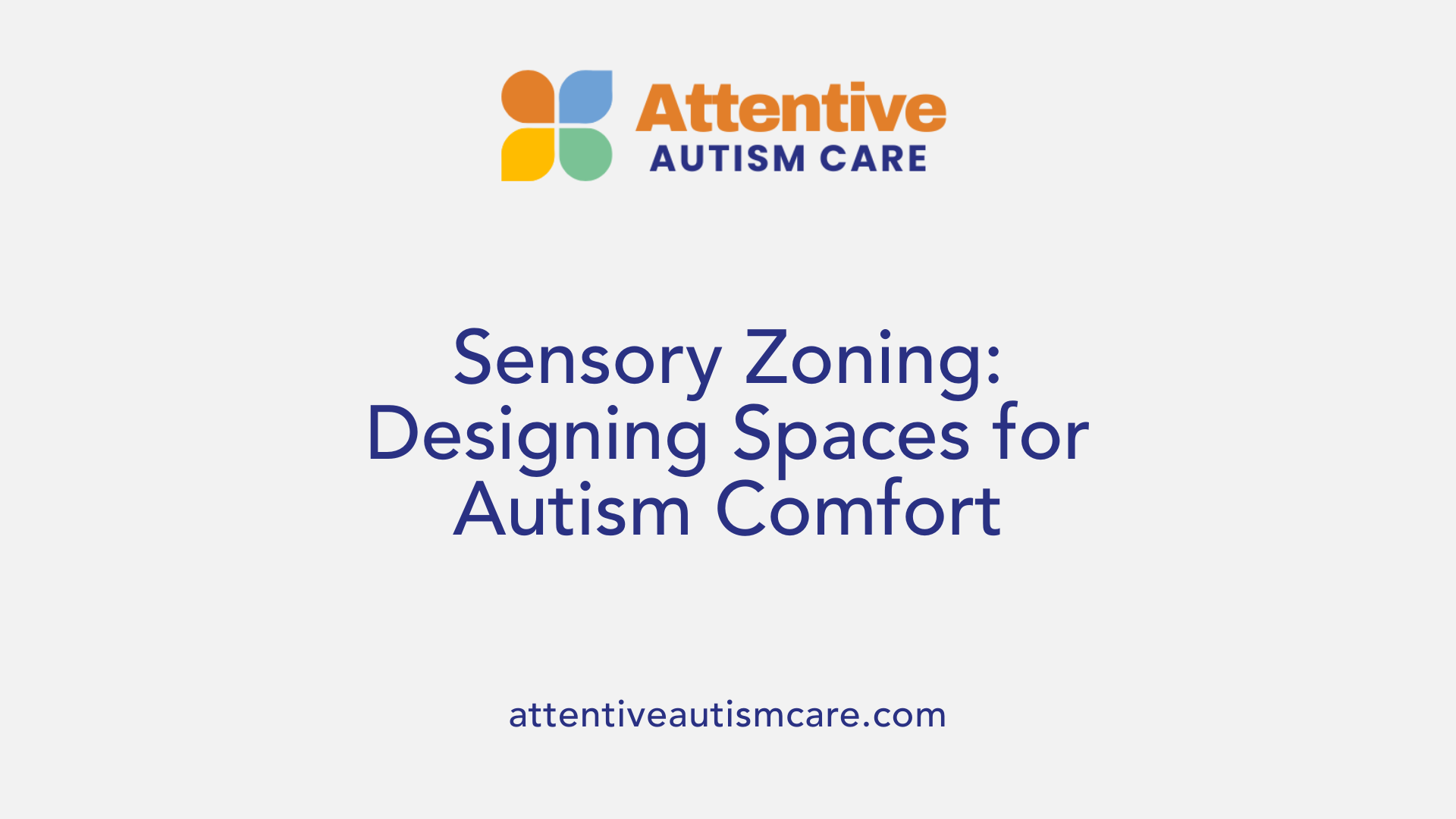
What is the Concept of Sensory Zoning?
Sensory zoning is an approach in interior design that organizes spaces based not only on their function but significantly on the level of sensory input they provide. This means designing different zones within an environment that offer varying intensities and types of sensory stimuli. For autistic individuals, whose sensory processing can be uniquely intense or muted, this zoning helps create predictable and manageable sensory experiences, reducing overwhelm and enhancing comfort.
What is the Autism Aspects Design Index?
The Autism Aspects Design Index is a framework developed to guide the design of interior spaces specifically for autistic users. It emphasizes four critical sensory and environmental elements:
- Acoustics: Controlling sound levels to reduce noise overload.
- Spatial Sequencing: Organizing spaces logically to support predictability and ease of navigation.
- Escape Spaces: Providing quiet or low-stimulus areas for recovery when sensory input becomes overwhelming.
- Safety: Ensuring physical and sensory safety throughout the environment.
This index helps designers create welcoming and accessible environments by addressing sensory challenges systematically.
How is Balancing Sensory Input Levels Achieved?
Balancing sensory input involves categorizing areas within a facility or home into zones where sensory stimuli are controlled intentionally. For example:
- High-stimulation zones: Areas like play or activity spaces that offer controlled sensory input to encourage engagement.
- Low-stimulation zones: Quiet rooms or escape areas with subdued lighting, minimal sounds, and soft textures for calming effects.
- Transition zones: Spaces that help individuals move gradually from high to low sensory input environments.
By thoughtfully balancing these zones, environments can accommodate the diverse sensory needs of autistic individuals, promoting participation and well-being.
Overall, sensory zoning grounded in the Autism Aspects Design Index is essential in creating supportive, adaptable interior spaces that respect sensory sensitivities common among autistic children and adults.
Effective Sensory Equipment and Tools Used in Sensory Rooms
What Are Passive and Active Stimuli in Sensory Rooms?
Sensory rooms utilize both passive and active stimuli to cater to the diverse sensory preferences of autistic individuals. Passive stimuli include elements like gentle lights, soothing music, and bubble tubes that create a calming sensory environment without requiring direct interaction. Active stimuli, on the other hand, engage users more directly, such as textured panels or interactive surfaces that invite touch and exploration. This combination allows individuals to either relax passively or participate actively, depending on their comfort and sensory needs.
Examples of Common Sensory Equipment
Several types of equipment are commonly used in sensory rooms to stimulate different senses. Bubble tubes provide gentle visual and auditory stimuli, creating a mesmerizing and calming effect with bubbles illuminated by colored lights. Weighted blankets are another popular tool, offering deep pressure touch that can help reduce anxiety and promote a sense of security. Fiber optic lights add dynamic visual stimulation, while manipulatives like tactile panels and sensory balls offer hands-on engagement. Additionally, vibroacoustic components provide gentle vibrations that can soothe and regulate sensory input.
Tailoring Sensory Stimuli to Individual Needs
Each autistic individual experiences sensory input differently, with variations in sensitivity and preferences. Sensory rooms are designed to be adjustable so that stimuli intensity and type can be tailored to individual requirements. For example, lighting levels can be dimmed or colors changed to suit visual sensitivities, while sound levels can be modified to prevent overload. The choice between more passive or active engagement depends on the person's current state and therapeutic goals. This customization ensures the environment is both supportive and enjoyable, facilitating improved mood, attention, and self-regulation.
The Role of Predictability and Information in Reducing Sensory Challenges
How does predictability improve accessibility for autistic individuals?
Predictability plays a crucial role in improving accessibility for autistic individuals by reducing sensory challenges linked to uncertainty and anxiety. When environments and activities provide advance information, autistic individuals can anticipate sensory inputs such as lights, sounds, and social interactions. This preparation makes it easier for them to manage their responses and feel more comfortable.
Advance communication methods
Effective advance communication includes providing detailed and consistent information before visits or participation in public settings. This can be accomplished through:
- Visual guides or maps of the environment
- Descriptions of what to expect sensory-wise (noise levels, lighting, smells)
- Timetables or schedules detailing event sequences
- Pre-visit virtual tours or videos
By using these methods, autistic individuals can reduce uncertainty, which often exacerbates sensory overload.
Impact of unpredictability
Unpredictability leads to heightened sensory burden, as unexpected sounds, lights, or crowds can cause stress and anxiety. Environments that lack clear information often feel overwhelming and disabling. For instance, supermarket layouts or public transport experiences can become difficult without prior knowledge of what to expect.
Tools for providing predictability
Several tools can enhance predictability in sensory environments:
- Sensory-friendly signage indicating quiet zones or areas to recover
- Digital alerts or apps that inform about crowd levels or noise
- Staff trained to communicate clearly and consistently
Adopting such tools helps create more enabling sensory environments that improve the overall experience for autistic adults and children alike.
Staff Training and Awareness as a Pillar for Sensory-Friendly Environments
Why Is Staff Understanding of Autism Important?
Staff understanding plays a crucial role in creating sensory-friendly environments for autistic individuals. Misunderstandings about autism can lead to inadequate support and increased stress for autistic adults and children in public spaces like supermarkets, healthcare settings, and transport. When staff are knowledgeable about sensory sensitivities, they can better manage situations involving overwhelming sensory input and help mitigate sensory overload.
What Barriers Arise from Lack of Autism Awareness?
A lack of awareness among staff often results in environments that feel hostile or disabling to autistic people. This includes unhelpful reactions to sensory distress, inadequate communication methods, and failure to recognize the need for adjustments such as pace changes or quiet zones. These barriers amplify anxiety and reduce accessibility, discouraging autistic individuals from participating fully in community life.
What Training Approaches Help Improve Staff Awareness?
Effective training involves educating staff about the sensory features of autism, including hyper- or hypo-reactivity to stimuli like sounds, lights, and touch. Programs often incorporate practical guidance on:
- Managing sensory burdens
- Providing clear, predictable information
- Implementing tailored communication techniques
- Recognizing signs of sensory overload
Training can also include role-playing exercises and direct input from autistic individuals to increase empathy and understanding. Collaboration between healthcare providers, educators, and design experts through approaches like design thinking ensures that training is relevant and actionable. Ultimately, well-trained staff are better equipped to create inclusive environments where autistic people feel supported and safe.
Adjustments in Communication and Environment for Autism Accessibility
What Are Tailored Communication Methods?
Tailored communication methods involve customizing how information is shared to match the needs of autistic individuals. This can include using clear, simple language or alternative communication aids like visual supports and written instructions. Providing advance information about what to expect in a setting reduces unpredictability, which helps decrease sensory stress.
How Does Pace Management Help?
Pace management refers to controlling the speed and flow of interactions and activities to suit autistic people's sensory processing needs. Slower, more predictable progress allows individuals time to adjust and reduces sensory overload. For example, staff in public venues might offer quieter times or slower service to help manage sensory input.
What Are Sensory-Friendly Schemes?
Sensory-friendly schemes are environmental adjustments aimed at reducing sensory burden. These include dimming bright lights, minimizing background noise, and creating quiet zones or sensory rooms that offer a safe retreat from overwhelming sensory stimuli. Simple measures like providing headphones, weighted blankets, or sensory kits can also support self-regulation.
Implementing these adjustments fosters more enabling sensory environments in supermarkets, healthcare settings, and public transport by increasing control over sensory stimuli and improving overall accessibility for autistic adults. Staff training is crucial so that personnel understand sensory challenges and can apply tailored strategies effectively.
| Adjustment Type | Description | Example Implementation |
|---|---|---|
| Tailored Communication | Custom info delivery suited to needs | Visual schedules, written instructions |
| Pace Management | Slowing down interactions and activities | Quiet hours, slower service |
| Sensory-Friendly Schemes | Environmental changes to reduce sensory load | Dimmable lights, sensory rooms, noise reduction |
These adjustments not only improve comfort but also enhance participation and autonomy for autistic individuals in everyday environments.
Recovery Spaces: The Importance of Escape Areas within Public Facilities
What Role Do Quiet Zones and Sensory Rooms Play?
Quiet zones and sensory rooms serve as essential recovery spaces for autistic individuals in public facilities. These areas provide refuge from overwhelming sensory inputs commonly found in everyday environments such as supermarkets, healthcare settings, and transport hubs. Sensory rooms, often equipped with visual, auditory, tactile, and olfactory stimuli like bubble tubes, fiber optic lights, and calming music, offer a controlled environment where individuals can engage with multi-sensory equipment tailored to their needs. Quiet zones allow individuals to withdraw temporarily from stimuli, helping to prevent sensory overload and reduce the risk of anxiety or behavioral distress.
How Do Recovery Spaces Benefit Sensory Regulation?
Recovery spaces help autistic individuals regulate overstimulation by lowering sensory burden and offering a space to decompress. These areas enable users to manage the intensity and duration of sensory input, which is crucial in settings that otherwise present inescapable and sustained sensory challenges. By providing an environment where sounds, lights, and scents can be moderated or avoided, sensory rooms and quiet zones improve mood, attention, and reduce anxiety. This self-regulation also supports better participation in public activities and healthcare visits, fostering independence and wellbeing.
What Are Important Design Considerations?
Effective recovery spaces prioritize sensory zoning, ensuring the environment's acoustic, lighting, and spatial qualities meet sensory needs. Design approaches emphasize natural interactions, safety, and escape routes, often inspired by the 'Autism Aspects Design Index,' which guides the arrangement of calming, active, and transition zones within these spaces. Lighting should be adjustable and soft to accommodate light sensitivity, while noise levels are minimized. Equipment within sensory rooms must be adaptable to individual preferences, offering both passive experiences like dimmable lights and active engagement through touch. Accessibility and clear signage enhance predictability, making these spaces easier to navigate.
In summary, recovery areas within public facilities are vital for creating enabling sensory environments where autistic individuals can find relief and build resilience against sensory overload.
Case Studies: Sensory Room Integration in Supermarkets and Retail Spaces
Real-world Applications
In various supermarkets and retail shops, integrating sensory rooms or similar sensory management zones has been actively explored to enhance accessibility for autistic adults. These environments are traditionally experienced as overwhelming due to sustained sensory input such as bright lights, loud noises, and strong scents.
A notable example involves a supermarket that introduced a quiet sensory space, designed with adjustable lighting and calming visual stimuli, where shoppers can retreat during moments of sensory overload. This space functions as a recovery zone, offering tactile panels and soothing sounds to help regulate sensory input in a controlled manner.
Sensory Management Strategies
Effective strategies adopted in these case studies include controlling aspects of the sensoryscape — such as dimmable lighting and reducing ambient noise levels — to lower the overall sensory burden. Predictability and understanding are also emphasized by providing clear signage, pre-visit information, and staff training focused on autism awareness. Staff members are educated to recognize sensory distress signals and to guide individuals toward the sensory room or other supportive accommodations.
Adjustments like slower checkout options and sensory-friendly shopping hours complement the use of sensory spaces, creating a more inclusive experience.
Outcomes and Benefits
The incorporation of sensory rooms within retail environments leads to measurable benefits. Autistic adults report reduced anxiety and improved ability to complete shopping trips without overstimulation. Staff understanding and the availability of predictable, adjustable environments enhance overall satisfaction for both customers and employees.
These case studies demonstrate that sensory management — combining physical adjustments with supportive staff and recovery spaces — effectively transforms challenging retail settings into enabling environments. This not only improves accessibility but also promotes social inclusion and independence for autistic individuals.
Research on Sensory Room Use with Autistic Children in Educational Settings
Cardiff University Findings
Research conducted by Cardiff University's Wales Autism Research Centre explored the impact of sensory rooms on autistic children aged 4 to 12 across various educational settings. This study included both experimental and observational approaches, focusing on how these multi-sensory spaces influence children's daily experiences in school environments. The sensory rooms contained diverse equipment catering to different senses such as touch, hearing, sight, and proprioception, adjustable to individual needs.
Impact on Engagement and Mood
The findings revealed that sensory room use helped improve key aspects of autistic children's participation. Notably, researchers observed enhancements in engagement, attention, and mood, alongside reductions in anxiety levels. These positive changes contributed significantly to better relationship building between the children and their peers or educators, facilitating a more inclusive and supportive learning atmosphere.
Collaboration with Stakeholders
A distinct feature of this research was the direct involvement of autistic children, teachers, practitioners, and parents. This inclusive approach ensured that various perspectives and lived experiences shaped the understanding of sensory room benefits. By collaborating closely with those directly impacted, the researchers could tailor recommendations and design interventions that address real-world challenges faced by autistic students in educational contexts.
How Sensory Rooms Facilitate Attention and Relationship Building
Improved focus through sensory regulation
Sensory rooms create multi-sensory environments designed to help autistic children self-regulate by controlling overwhelming sensory input. These rooms use equipment that targets touch, hearing, sight, smell, and vestibular senses, helping reduce sensory overload which can hinder attention. By allowing children to engage actively or passively with tailored stimuli like dimmable lights, bubble tubes, or tactile panels, sensory rooms promote calmness and steady engagement. Research at Cardiff University involving autistic children aged 4–12 showed sensory room use led to notable improvements in engagement and attention during educational activities.
Positive social interactions
The calming, controlled atmosphere within sensory rooms fosters better mood and reduces anxiety, creating a more conducive space for social connection. Children in these environments benefit from improved relationship building with peers, teachers, and practitioners, partly because sensory regulation reduces irritability and behavioral challenges like self-harm or aggression. Collaborative input from autistic individuals and caregivers has highlighted that sensory rooms support more positive interactions by providing safe spaces that accommodate individual sensory sensitivities.
Long-term benefits
Long-term use of sensory rooms supports the development of independent living skills by encouraging self-awareness and emotional regulation. Technologies like the 'Mediate' interactive environment enhance exploration and behavioral adaptability over time. Sensory zoning concepts in design also ensure that children consistently have access to environments that suit their sensory profiles. Ultimately, sensory rooms contribute to sustained improvements in attention, mood, and social engagement that extend beyond the immediate setting into everyday life.
Technological Innovations: Digital and Interactive Sensory Environments
How are sensors and digital technology used in sensory environments for autistic individuals?
The integration of sensors and digital technology in sensory environments marks a significant advance in supporting autistic individuals. These technologies enable environments to respond dynamically to the user's interactions and sensory needs. For example, sensors can detect movements, touch, or proximity, triggering corresponding visual, auditory, or vibrotactile responses that engage multiple senses simultaneously. This interactive capability allows the environment not only to stimulate but also to adapt to the individual's behavior and preferences in real-time.
What is an example of a digital sensory environment, such as 'Mediate'?
"Mediate" is an innovative interactive sensory environment that incorporates sensors and digital technology to generate a rich mix of visual, auditory, and vibrotactile stimuli. This setup promotes exploration, engagement, and positive behavior modification in children with autism. By offering responsive multisensory experiences, Mediate encourages children to interact with their surroundings in ways that foster curiosity and learning. Such environments can be customized to meet individual sensory profiles and support specific developmental goals.
How do technology-enhanced sensory rooms support independent living?
These digital and sensor-driven sensory environments contribute to developing skills necessary for independent living. By providing controlled, multisensory experiences that can be tailored and adjusted, they facilitate the gradual building of self-regulation, attention, and adaptive behaviors. Over time, exposure to these tailored stimuli helps autistic individuals become more comfortable navigating sensory-rich settings, teaching coping strategies and promoting autonomy. As a result, technology-enhanced sensory rooms are valuable tools in both therapeutic and educational contexts aimed at enhancing everyday functioning and quality of life.
The Therapeutic Use of Visual and Auditory Stimuli in Sensory Rooms
Sensitivity to Light and Color
Children with autism often exhibit heightened sensitivity to visual stimuli. Research highlights that about 46.6% of autistic children are particularly sensitive to light, which includes varying intensities and colors. This sensitivity makes light a powerful tool in therapeutic settings, where carefully controlled lighting can help develop skills and promote relaxation. Sensory rooms leverage this by using elements like bubble tubes and fiber optic lights, which provide gentle, engaging visual inputs that can capture attention without overwhelming the child.
Auditory Stimuli and Calming Effects
Alongside visual stimuli, auditory inputs play a vital role in sensory rooms. Soft, rhythmic sounds or calming music are frequently used to soothe anxiety and improve mood among autistic children. The audio components can include passive elements like instrumental music or actively responsive features that adjust the sound based on the individual’s reactions. These auditory stimuli help regulate emotional responses by providing predictable and controlled sound environments that reduce sensory overload and promote engagement.
Tailoring Stimuli to Individual Preferences
A core principle of sensory room design is customization to meet individual sensory profiles. Since autistic children vary widely in their responses to sensory inputs, rooms incorporate adjustable elements that can be tailored. For instance, lighting brightness and color hues can be changed, while auditory stimuli can be modulated in volume and type. This flexibility ensures that each child receives sensory input conducive to relaxation, focus, or stimulation according to their unique needs, enhancing both participation and therapeutic outcomes.
Sensory Rooms as Tools to Reduce Behavioral Issues in Autism
Effects on self-harm and aggression
Sensory rooms have emerged as valuable therapeutic spaces to help reduce behavioral problems in children with autism, particularly self-harm and aggression. These rooms provide a controlled setting where sensory input can be carefully adjusted to soothe and regulate emotional responses. The calming environment helps minimize triggers that often lead to these challenging behaviors, promoting a safer and more positive experience for autistic individuals.
Role of multi-sensory stimuli
The effectiveness of sensory rooms lies in their integration of multi-sensory stimuli. Visual, auditory, tactile, and olfactory elements—such as bubble tubes, optic fibers, vibroacoustic components, calming scents, and gentle sounds—are combined to create an immersive experience tailored to each child's unique sensory profile. Research shows that children with autism are particularly sensitive to visual stimuli like light and color, with about 46.6% showing strong visual sensitivity. These controlled stimuli not only engage the senses but also provide therapeutic input that can help in developing skills and reducing sensory overload.
Safe engagement and stimulation
Sensory rooms are designed as safe environments where children can explore sensory experiences at their own pace. The absence of overwhelming or unpredictable sensory triggers reduces anxiety and supports self-regulation. This safe engagement encourages children to interact with the stimuli actively or passively, fostering a sense of control and calm. By offering a variety of sensory inputs, sensory rooms accommodate individual needs, allowing children with autism to find comfort and stimulation that suits them best, reducing behavioral challenges in everyday settings.
Low-cost Solutions and Natural Interactions in Sensory Room Design
Affordable Sensory Tools for Sensory Rooms
Designing sensory rooms to support autistic children doesn't have to be expensive. Empirical studies and visits to care centers worldwide indicate that lower-cost sensory tools can be just as effective as high-end equipment. These affordable options often include tactile panels, simple light sources, textured materials, and sound-producing objects that provide meaningful sensory input without a high price tag.
Incorporating Nature into Sensory Environments
Natural interactions provide a powerful and calming sensory experience. Sensory rooms that emphasize elements from nature—such as plants, water features, natural lighting, and wood textures—can create soothing spaces. These natural components often help regulate sensory overload by offering gentle stimulation and promoting a connection to the outdoors within an indoor environment.
Effectiveness and Customization
The success of sensory rooms depends heavily on tailoring sensory stimuli to each child's unique sensitivities and preferences. Customizing elements ensures that the sensory input neither overwhelms nor understimulates. By combining affordable tools with natural sensory experiences, rooms can support engagement, mood regulation, and skill development. Careful selection and arrangement of sensory features based on individual needs produce the most supportive and inviting environments for autistic children.
Applied Behavior Analysis (ABA) Therapy Overview
What is Applied Behavior Analysis (ABA) therapy?
Applied Behavior Analysis (ABA) therapy is a scientific approach dedicated to understanding and modifying behavior. It focuses on promoting positive behaviors such as communication, social skills, and independence, while aiming to reduce harmful or maladaptive behavior. Through detailed observation of antecedents and consequences, ABA techniques—most notably positive reinforcement—are applied to encourage desirable behavior changes.
How are personalized therapy plans developed?
ABA therapy is highly individualized. Each program begins with a thorough assessment to identify the individual's unique strengths and challenges. Based on this assessment, specific goals are set, and strategies are tailored to meet the needs of the individual. Regular data collection during therapy sessions helps track progress and adjust the approach as necessary, ensuring that the therapy remains effective and relevant.
What role does reinforcement play in ABA?
Reinforcement is central to ABA therapy. Positive reinforcement involves rewarding desired behaviors, which increases the likelihood that these behaviors will occur again. This can include verbal praise, tokens, or tangible rewards tailored to the individual's preferences. By carefully applying reinforcement, therapists can shape and strengthen functional behaviors that improve daily living and social interaction.
Together, these elements enable ABA therapy to provide structured support for autistic individuals, helping them develop skills that enhance their quality of life.
Benefits of ABA Therapy for Individuals with Autism

How does ABA therapy benefit individuals with autism?
ABA (Applied Behavior Analysis) therapy offers significant benefits for individuals with autism by fostering critical skill development and behavioral improvements. It uses a science-based, individualized approach focusing on positive reinforcement and behavior analysis. This supports growth in life, language, and social skills, which are essential for everyday functioning.
Through structured interventions, ABA helps reduce problematic behaviors such as aggression or self-harm, replacing them with more adaptive and socially acceptable actions. These behavioral changes contribute to safer, more positive interactions within families, schools, and communities.
Skill Development
ABA therapy targets essential skills that promote independence. These include communication abilities—such as verbal expression and understanding social cues—as well as daily living skills like dressing, eating, and personal hygiene. Developing these capabilities enhances the individual's autonomy and quality of life.
Behavioral Improvements
By addressing behaviors that may interfere with learning and social participation, ABA therapy encourages positive behavior patterns. Techniques such as prompting, modeling, and reinforcement help shape desirable behaviors while decreasing disruptive or harmful actions.
Long-Term Outcomes
With consistent ABA therapy, many individuals experience sustained improvements. These outcomes include better social integration, increased independence, and higher chances of success in educational and vocational settings. Early and ongoing interventions further enhance these positive long-term effects.
ABA therapy’s comprehensive, evidence-supported approach ensures that individuals with autism receive tailored support. This assistance empowers them to navigate life challenges more effectively and achieve their fullest potential.
Qualifications and Roles of ABA Therapy Providers
Who provides ABA therapy and what qualifications do they have?
ABA therapy is delivered by a variety of trained professionals who work as part of a collaborative team. The primary providers include Board Certified Behavior Analysts (BCBAs), licensed therapists, Registered Behavior Technicians (RBTs), and support personnel.
Professional credentials
B.C.B.As hold advanced degrees in behavior analysis or related fields and have obtained certification from the Behavior Analyst Certification Board (BACB). This credential ensures they meet rigorous standards in behavior analytic practice.
Registered Behavior Technicians (RBTs) are paraprofessionals trained specifically to implement ABA interventions under the supervision of a BCBA. They complete coursework and competency assessments to demonstrate their skills.
Licensed therapists providing ABA may also hold credentials as psychologists, speech therapists, or occupational therapists with specialized ABA training.
Team member roles
The BCBA develops and oversees individualized treatment plans, conducts assessments, analyzes data, and adjusts interventions.
RBTs deliver the direct therapy sessions, implementing strategies as outlined by the BCBA.
Support staff assist with administrative tasks, coordination, and sometimes co-facilitate interventions in multidisciplinary settings.
Skills and qualities needed
Effective ABA providers exhibit strong communication skills, patience, empathy, and keen attention to detail. Personalizing treatment to each individual's needs requires flexibility and collaborative problem-solving abilities.
These professionals are essential in creating meaningful progress for individuals benefiting from ABA therapy through evidence-based techniques and compassionate care.
Common Techniques Used in ABA Therapy Sessions

What are common techniques used in ABA therapy sessions?
ABA therapy employs a variety of techniques designed to build skills and reduce challenging behaviors in individuals with autism. Three widely used approaches are Discrete Trial Training (DTT), Natural Environment Training (NET), and positive reinforcement combined with prompting.
Discrete Trial Training (DTT)
DTT breaks down skills into small, manageable parts, teaching each step systematically through repetition. This structured method involves a clear beginning and end to each teaching trial, making it easier for learners to master specific tasks through consistent practice.
Natural Environment Training (NET)
NET focuses on teaching skills in the learner’s everyday surroundings. It uses naturally occurring situations and interests to promote learning, making it highly relevant and engaging. This approach helps generalize skills outside of structured settings.
Positive Reinforcement and Prompting
Positive reinforcement encourages desired behaviors by providing rewarding consequences, such as praise or tangible rewards. Prompting assists the learner in achieving the correct response, which is then gradually faded out as independence increases. Together, these strategies help shape behavior effectively and compassionately.
These evidence-based methods are tailored to meet individual needs, ensuring personalized progress and fostering meaningful skill development.
Criticisms and Controversies Surrounding ABA Therapy
Are there any controversies or criticisms surrounding ABA therapy?
Applied Behavior Analysis (ABA) therapy, while widely used for supporting autistic individuals, faces significant criticisms. A central concern is that ABA often emphasizes compliance and behavior modification, potentially at the expense of the individual's emotional and sensory well-being. This focus on compliance can lead to discouragement of natural behaviors such as stimming—repetitive movements or sounds—that many autistic people find soothing or necessary for self-regulation.
Critics argue that suppressing these innate behaviors may cause distress or trauma, contributing to mental health challenges like anxiety and depression. This issue is further complicated when ABA encourages masking, where autistic individuals hide or suppress traits to conform to neurotypical expectations, sometimes resulting in feelings of identity loss or burnout.
Concerns about compliance focus
ABA’s traditional approach prioritizes reducing behaviors deemed undesirable and increasing those considered socially acceptable. However, this reinforcement of conformity can overlook the autistic person’s sensory sensitivities and emotional needs, potentially refuting their lived experience. When therapy centers on obedience rather than understanding, it risks undermining trust and autistic self-expression.
Emotional and sensory well-being
Many autistic adults and advocates emphasize the importance of recognizing sensory environments and internal experiences. Disallowing natural reactions to sensory overload, like stimming or seeking quiet spaces, can heighten anxiety. ABA critics highlight that therapies should consider sensory burdens such as overwhelming sounds or lights, emphasizing well-being over mere behavior control.
Advocacy for person-centered approaches
In response to these issues, there is an increasing movement toward more respectful and individualized support methods. Person-centered approaches prioritize collaboration with autistic individuals, honoring their preferences and sensory needs without forcing neurotypical norms. These approaches often incorporate flexible environments, sensory accommodations, and focus on enhancing quality of life rather than enforcing strict behavioral goals.
This shift advocates for therapies that empower autistic people to thrive comfortably, recognizing their unique ways of interacting with the world without suppressing their identity or sensory expression.
Integrating Sensory Rooms and ABA Therapy for Holistic Autism Support in Public Facilities
How do sensory rooms complement ABA therapy for autistic support?
Sensory rooms provide a controlled multisensory environment that can regulate and engage autistic individuals' sensory systems. These spaces offer passive and active stimuli—such as lights, sounds, tactile panels, and scents—that help reduce sensory overload and promote calmness. When paired with Applied Behavior Analysis (ABA) therapy, which focuses on behavioral learning and skill development, sensory rooms can enhance the effectiveness of interventions by first addressing sensory regulation needs. This complementary relationship allows autistic individuals to better focus, engage, and respond positively during behavioral therapy sessions.
In what ways do sensory rooms support both behavioral and sensory needs?
Sensory rooms cater to the diverse sensory sensitivities common in autism, addressing hyper- or hypo-reactivity to stimuli like light, sound, and touch. They offer zones tailored for calming, active engagement, or transitions, aligning with the individual’s sensory preferences. This supports behavioral outcomes by minimizing triggers of anxiety or distress that disrupt learning or participation. Furthermore, sensory rooms facilitate mood stabilization, attention improvement, and social interaction, which are also important targets for ABA therapy. Together, these approaches create a more supportive framework for the autistic individual's holistic needs.
What are practical applications of integrating sensory rooms and ABA therapy in public facilities?
Public facilities such as healthcare centers, schools, museums, and supermarkets can integrate sensory rooms as dedicated spaces for autistic visitors to self-regulate and recover from sensory overload. Training staff in autism awareness and sensory needs enhances their ability to connect these calming experiences with behavioral support techniques derived from ABA therapy. Practical implementations include sensory-friendly adjustments like dimmable lights, quiet zones, sensory kits, and structured predictability through advance information, which complement the therapeutic goals. Together, these adaptations make environments more accessible and nurturing, supporting independent participation and well-being for autistic individuals.
| Aspect | Sensory Rooms | ABA Therapy | Integration Benefit |
|---|---|---|---|
| Focus | Sensory regulation and engagement | Behavioral skills and learning | Supports sensory readiness for behavior work |
| Sensory stimuli | Multisensory equipment (lights, sounds, touch) | Reinforces positive behaviors through rewards | Enhances attention and reduces sensory triggers |
| Environment | Safe and controlled zones for recovery | Structured settings with clear expectations | Facilitates smoother transitions and engagement |
| Staff role | Provide sensory support and environment management | Deliver behavior interventions | Collaborative approach enhances overall support |
By combining sensory-focused environments with evidence-based behavioral therapies, public spaces can become significantly more inclusive and effective in meeting the diverse needs of autistic individuals.
Future Directions: Enhancing Accessibility and Inclusivity Through Sensory Design and Behavioral Interventions
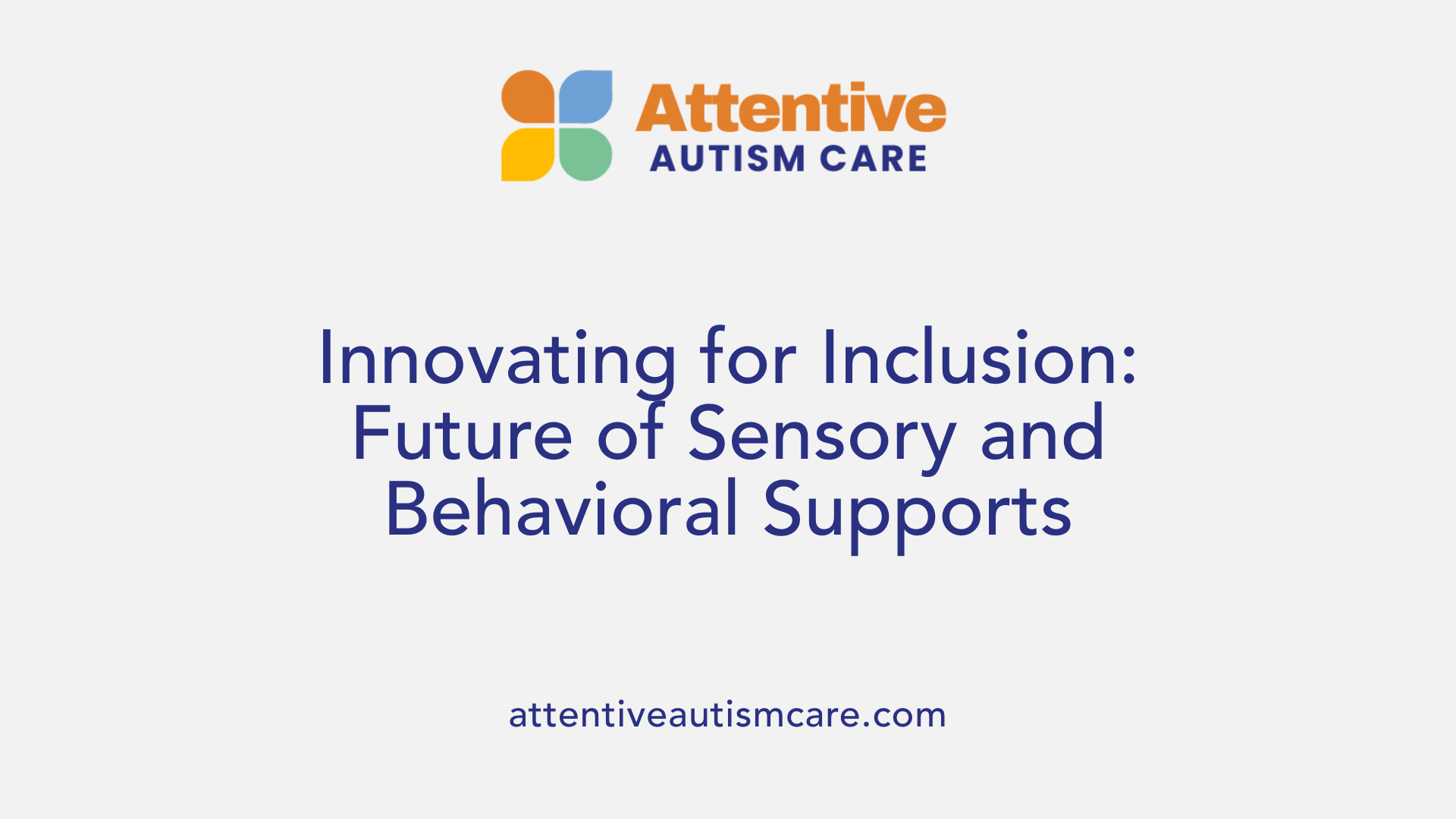
Innovative Design Approaches
The future of sensory environments for autistic individuals lies in innovative design strategies that prioritize sensory zoning and customization. Sensory zoning involves organizing spaces by levels of sensory input—ranging from calming to active zones—rather than merely by function. This helps create environments where autistic individuals can better regulate their sensory experiences. For example, digital and permanent sensory adaptive environments (SAEs) equipped with multi-sensory stimuli, including visual, auditory, tactile, and vibrotactile elements, offer therapeutic benefits and promote exploration. Technologies like the 'Mediate' interactive environment, involving sensors and digital interfaces, allow personalized stimulation to support behavior modification and independent living skills development.
Stakeholder Collaboration
Developing effective sensory environments requires close collaboration among diverse stakeholders. Healthcare providers, interior designers, researchers, educators, autistic individuals, and their families all contribute valuable perspectives. Studies highlight co-designed approaches where autistic children, their teachers, and practitioners actively participate in evaluating and refining sensory rooms. Training programs for healthcare staff to understand sensory features and customize procedures are crucial to improving engagement and reducing distress. This collaborative framework ensures that environments and interventions are both evidence-based and tailored to real-world needs.
Potential Policy Implications
To extend benefits broadly, policy changes are necessary to promote sensory-informed design and behavioral supports in public settings. This includes guidelines and regulations encouraging sensory-friendly adaptations in supermarkets, healthcare facilities, schools, and public transport. Policies should also support funding for sensory rooms and staff training programs as standard practices. Increasing awareness of sensory burden and the need for predictability, understanding, and recovery spaces can facilitate more inclusive communities where autistic individuals access services with dignity and comfort.
Towards More Inclusive Public Facilities for Autism Support
Sensory rooms represent a vital advancement in making public facilities more accessible and supportive for autistic individuals, offering regulated and calming environments amid overwhelming sensory inputs. Combined with informed staff, thoughtful spatial design, and behavioral therapies like ABA, these environments promote greater independence, comfort, and engagement. As research and design innovations continue to evolve, integration of multi-sensory and behavioral approaches must become standard practice, fostering more inclusive public spaces where autistic people can participate fully and safely.
References
- Sensory Experiences of Autistic Adults in Public Spaces
- Sensory room guide - supporting the learning and ...
- Designing sensory adaptive environments to enhance ...
- Multi-sensory interactive interior design for enhancing skills ...
- Is ABA therapy harmful? The controversy explained
- Applied Behavior Analysis (ABA)
- Applied Behavior Analysis (ABA)



